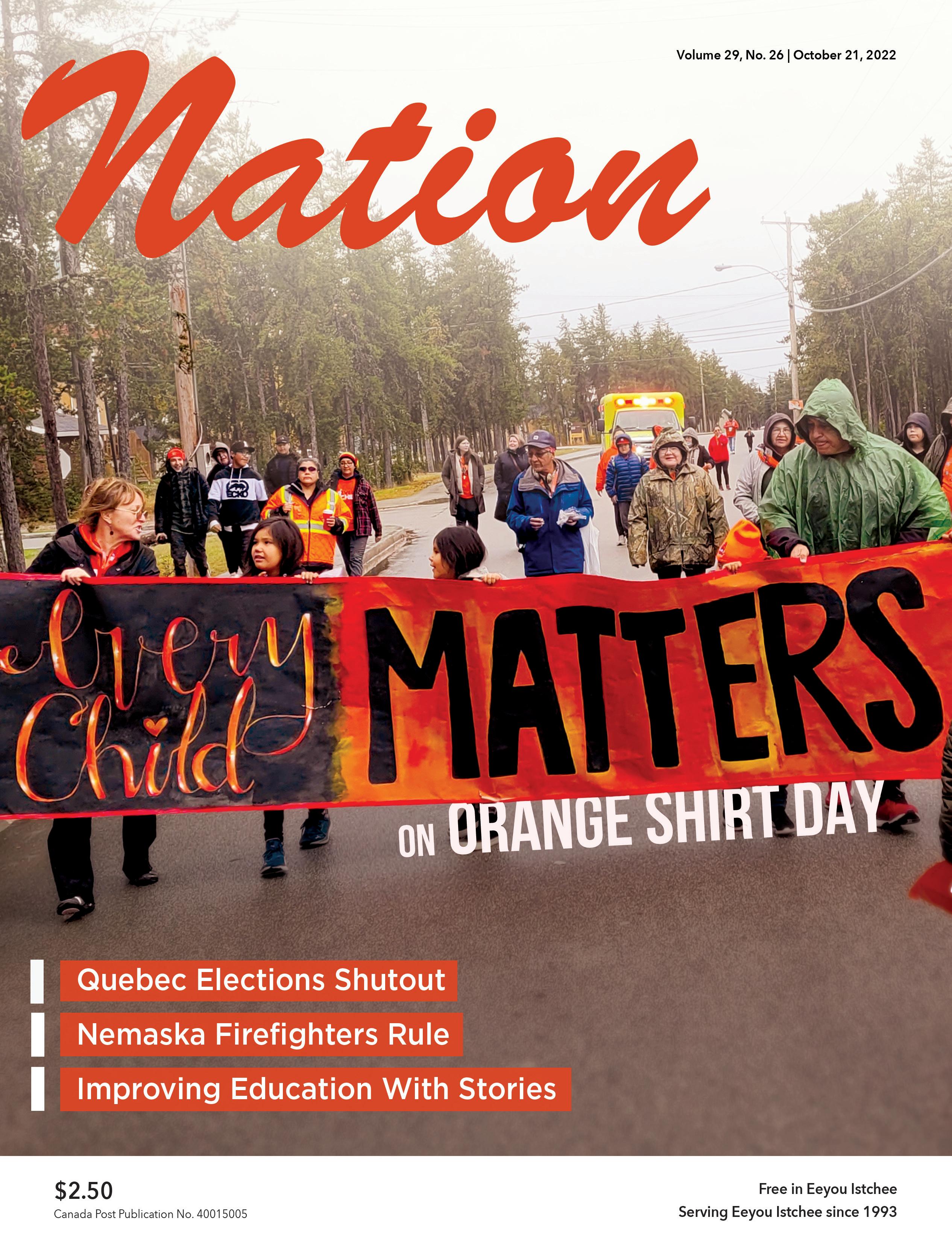

Your Northern Airline of Choice
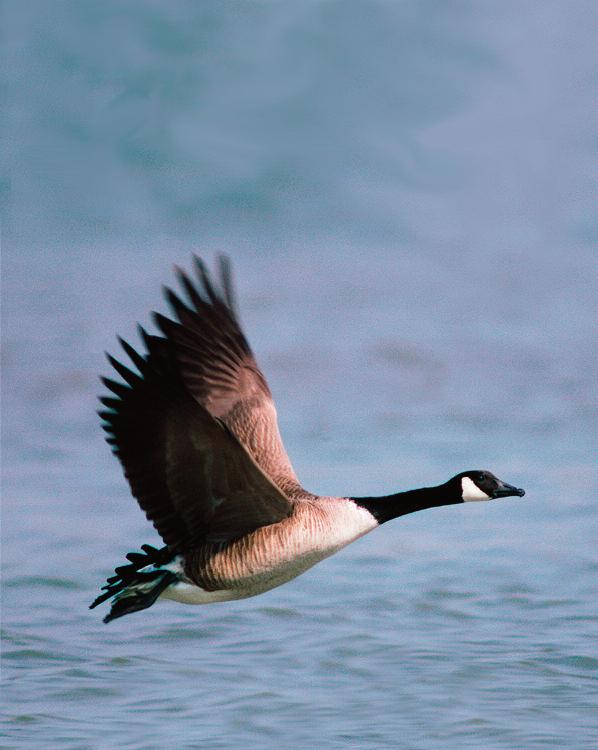
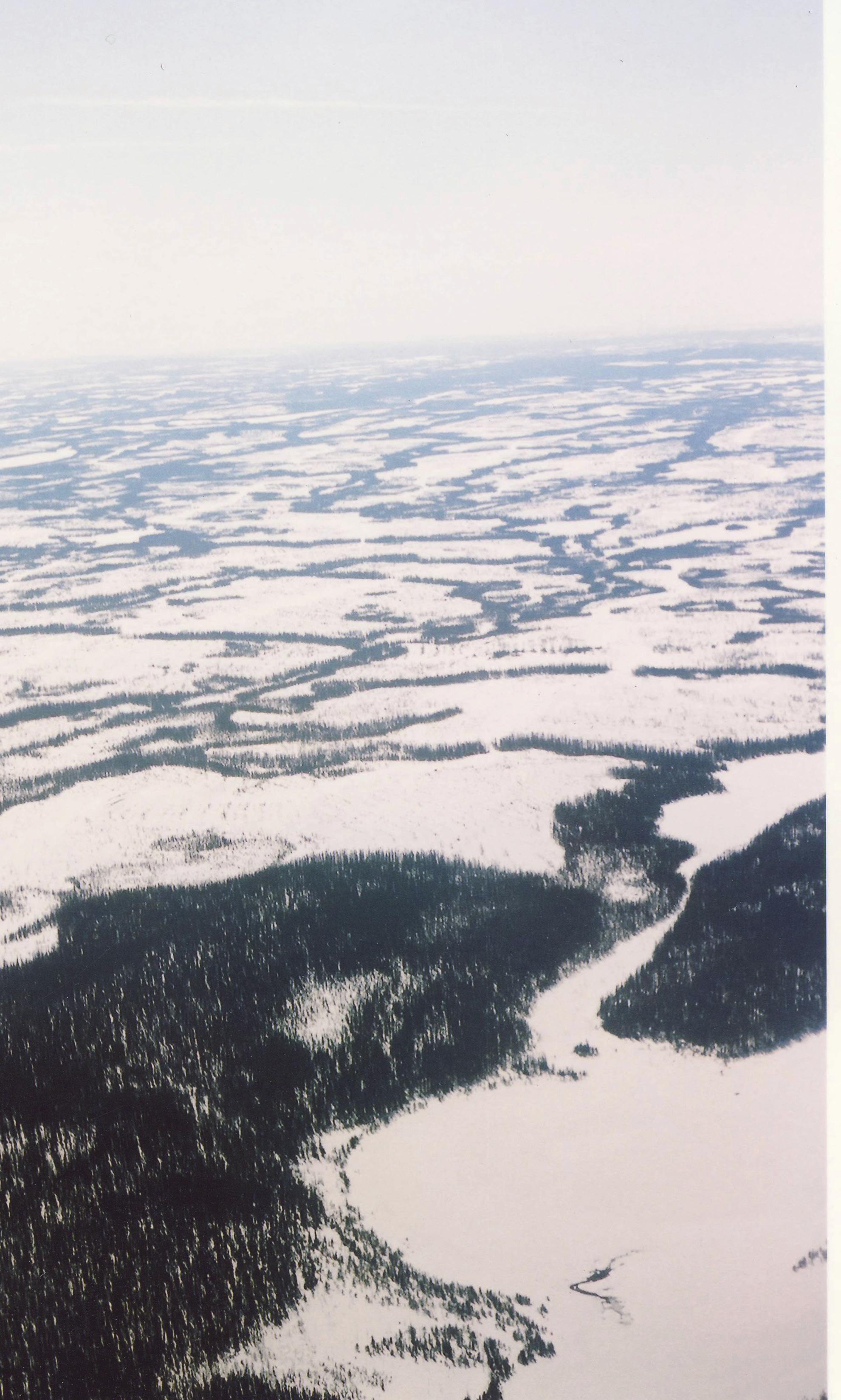
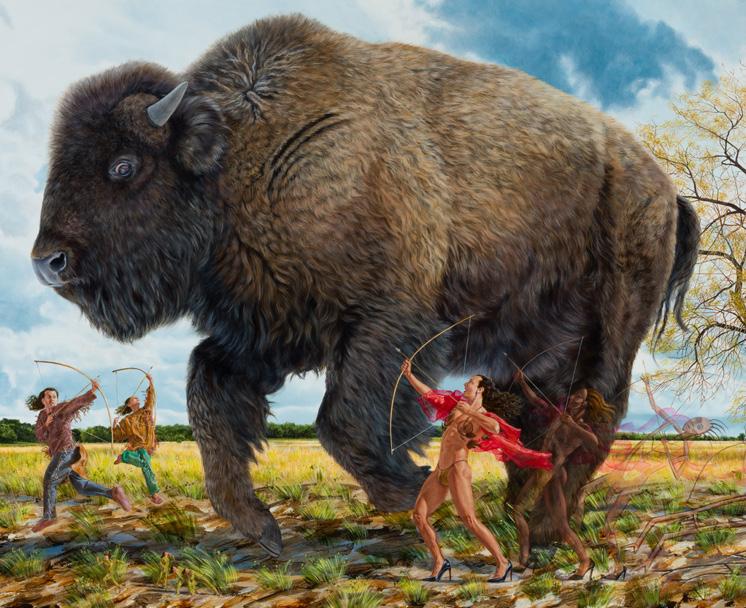

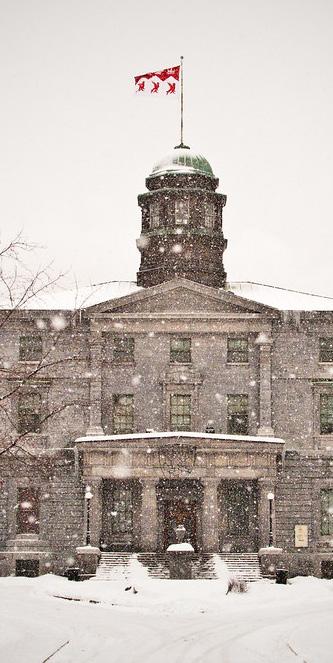
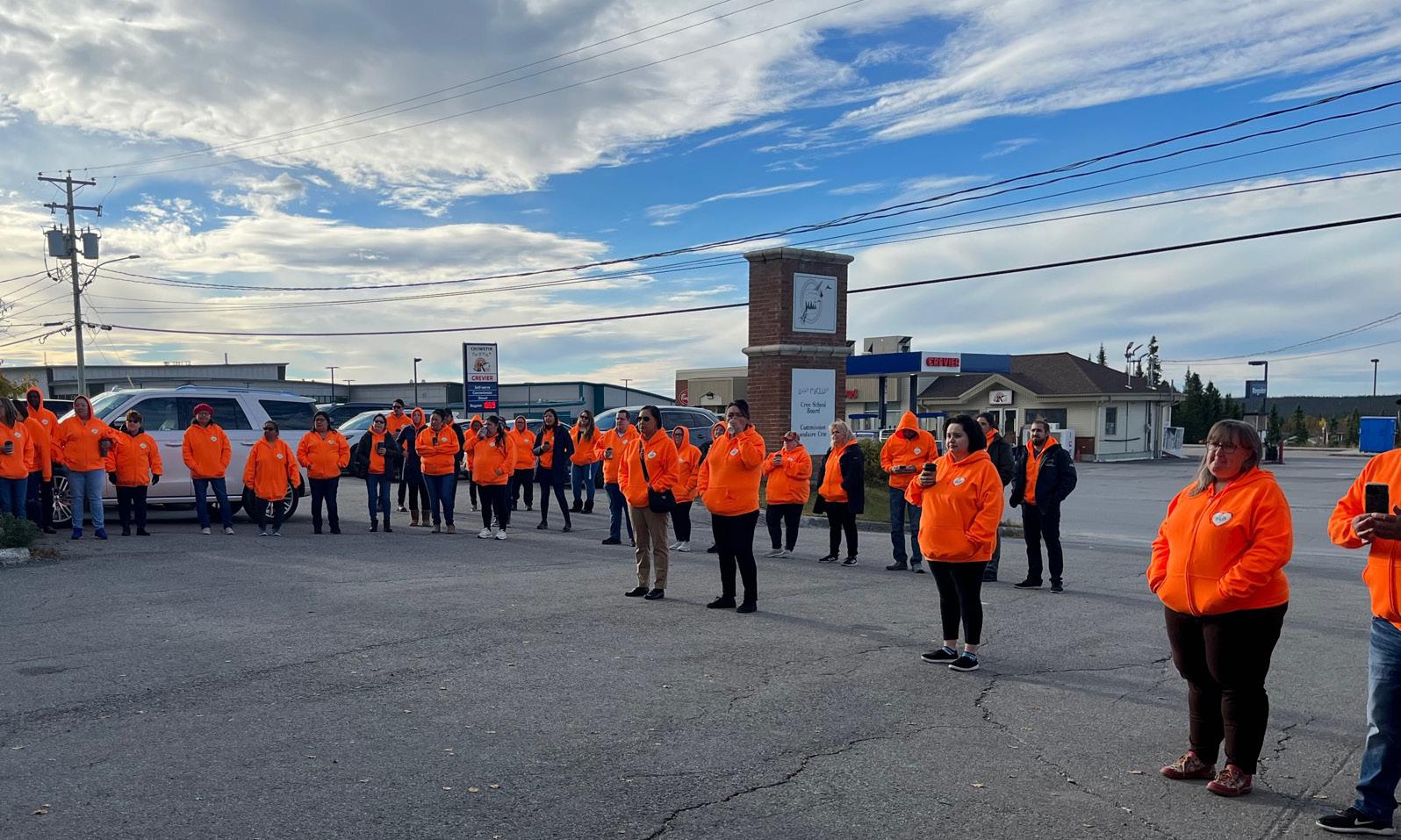






Exactly a week after the National Day of Truth and Reconciliation, the United Conservative Party of Alberta elected a new leader to replace the out going Jason Kenney, and thus, a new premier for that province since the UCP forms the government. It’s going to be interesting times for Alberta, as now-Pre mier Danielle Smith made clear in her first days in office.
Smith says she is very, very con cerned about people who face discrimi nation. Not the people for whom Orange Shirt Day – now the Day of Truth and Reconciliation – was created, mind you.
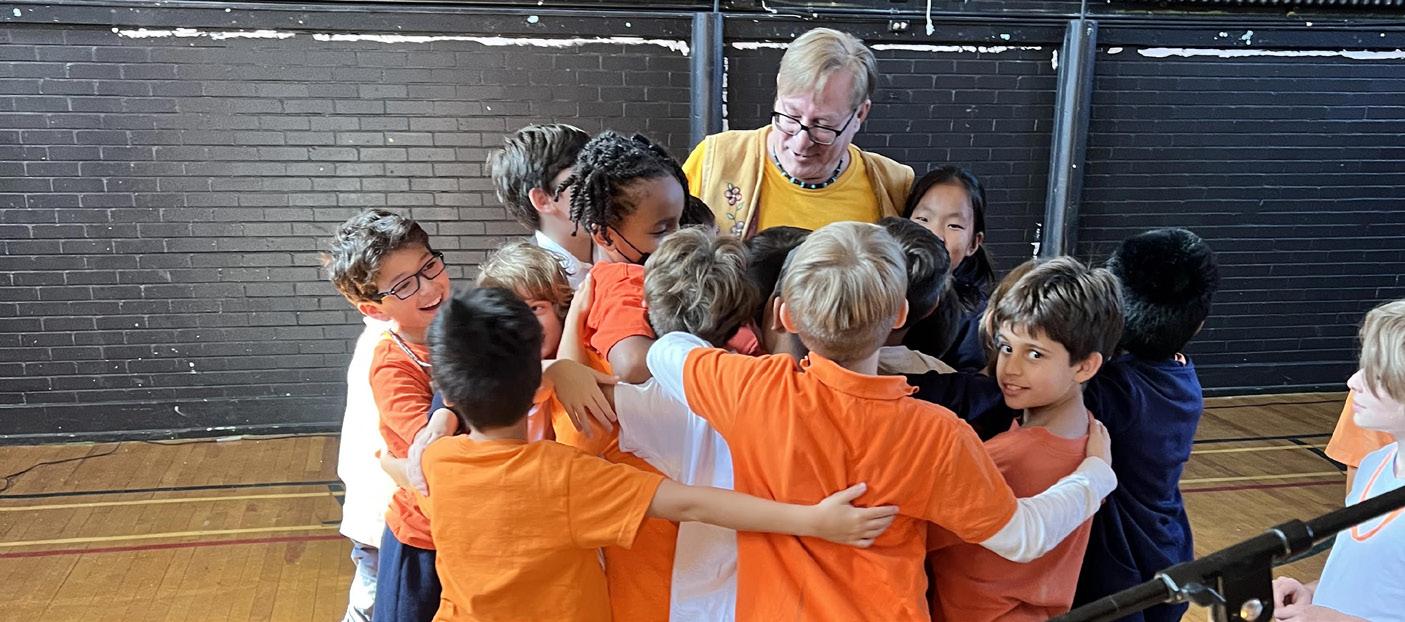

For Smith, as she said a few days after being sworn in, those who chose not to receive a Covid vaccination “have been the most discriminated-against group that I’ve ever witnessed in my lifetime. I don’t think I’ve ever experienced a situation in my lifetime where a person was fired from their job or not allowed to watch their kids play hockey or not allowed to go visit a loved one in long-term care or hospital, not allowed to get on a plane to either go across the country to see family or even travel across the border.”
Let that sink in.
Those who chose, for whatever mis guided reason, to remain unvaccinated are the biggest victims of discrimination in her 51 years of life. The former journalist has evidently never heard of residential schools, which were numerous in Alberta.
I wonder how you could be both a journalist and a politician and have led such a sheltered life.
There are two logical fallacies with her conclusion. The first is obviously that Covid deals with a medical issue and the measures in place were designed to protect people from the virus. This is not
a new response to a medical emergency, and neither are the vaccinations. Look at the historical medical fight against small pox and typhoid, for example.
Restrictions of this sort and human responses to those who would ignore the measures needed to combat a disease is nothing new and often needed… whether or not those who were against those measures were in favour of the imposed restrictions. It is not discrimination but rather a health choice that had conse quences and realistic conditions to deal with the problem.
Secondly, Smith has not looked at racial, cultural, sexual or religious dis crimination and related it to the medical discrimination she claims is so bad. How many of her unvaccinated voters were sterilized? Were they allowed to get married before 2005 when the first gay marriage was recognized? Were any of them in residential schools which did not close until the mid-1990s? How many of them are not allowed to wear any reli gious objects at work or they will be fired? What about the anti-Semitic discrimina tion in Alberta and lack of knowledge of the Holocaust?
At best it seems like a small part of the Alberta population that Smith is pander ing to as at least 82% of Albertans have received their first dose of vaccine and 78% have received two.
Donald Trump should have been a warning to both Americans and Canadian that the demagogues of speech who appeal to the lowest common denomina tor in our closely knit countries would be the new politics. After all, our children are on tablets or other forms of social media every day. We should have realized that the 15 minutes of fame no longer applies. We do not teach them to do their own research (easily done on the internet) and make up their minds on more than the words of those who appeal to an unthink ing follower.
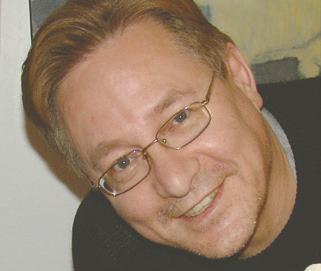

Make humanity great again. Make the closeness of your community great again. Make thinking for yourself great again. Make loving life great again. Make knowing your neighbour and understand ing them great again. Make listening to people and grabbing knowledge and then deciding for yourself what to think great again. Discrimination sucks and it’s time to end it and the people who promote it.
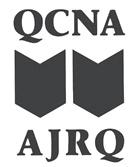
The power of stories
Improving the Indigenous post-secondary experience through storytelling
With an ever-increasing number of Indigenous post-secondary students, colleges and univer sities are developing inclusiveness ini tiatives to address systemic inequities. In Quebec, 25% of non-Indigenous people have university degrees, compared to 8% of Indigenous people.
Recognizing the power of stories, Susan Briscoe initiated the First Peoples’ Post-Secondary Storytelling Exchange (FPPSE) in 2015 at Dawson College, the province’s largest Cegep. Driven by the Truth and Reconciliation Commission’s calls to action, it’s one of Dawson’s efforts to improve the experience and success of Indigenous students.
When colleague Michelle Smith took the lead after Briscoe became terminally ill, the project was collaborating with many partners, including Kahnawake Survival School, the First Nations Regional Adult Education Centre, John Abbott College, and Concordia and McGill universities.
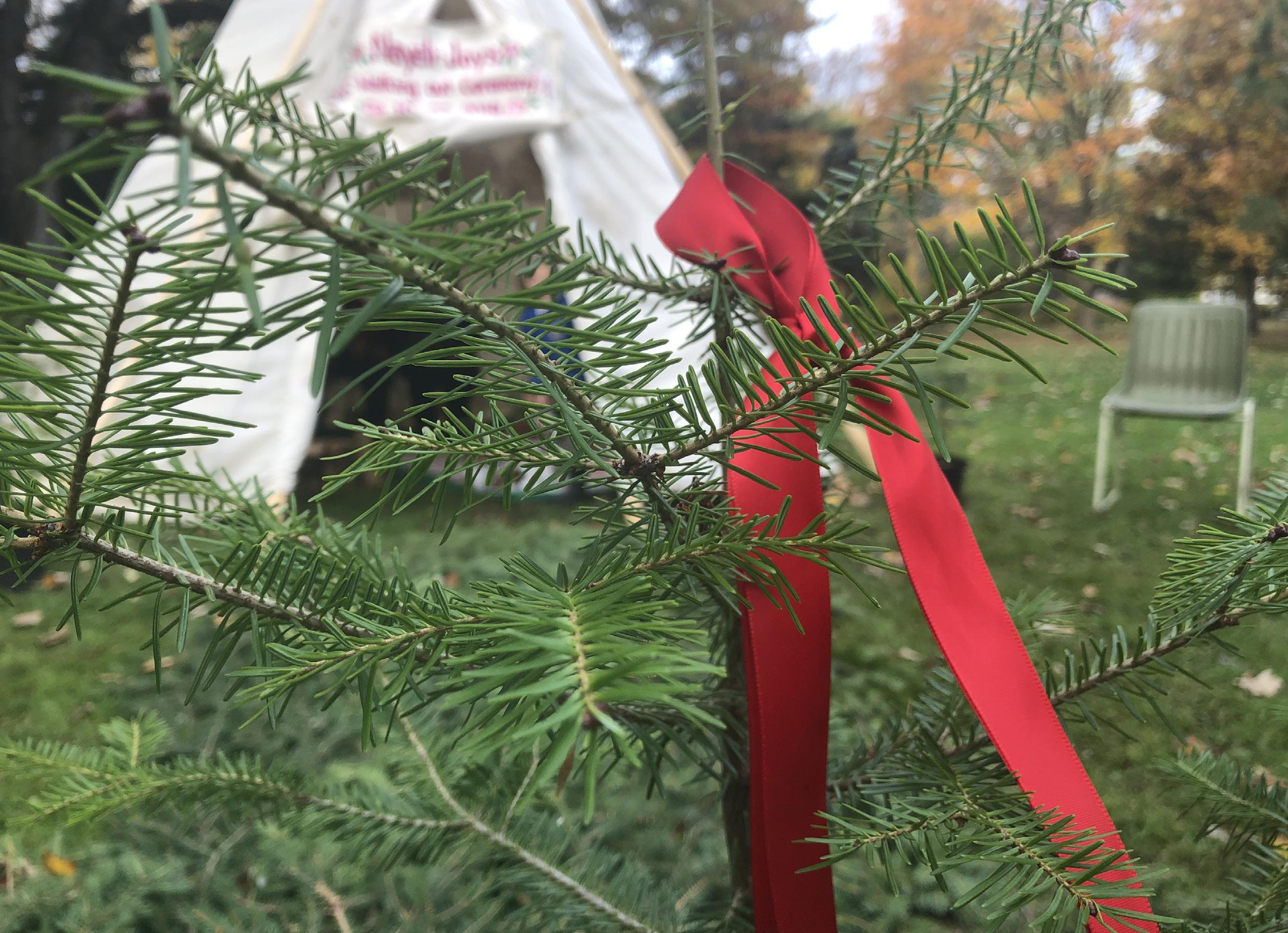
“We continued along the path that Susan laid out, talking with over 100 stu dents, family members and Elders over five years,” said Smith, a Red River Métis educator and filmmaker. “It became a place of celebration and validation of the rich approaches to teaching and learn ing that are ongoing in communities and among created communities in urban areas where a lot of Indigenous students find themselves.”
Although formally a research project, Smith was mindful that “research” can be a loaded term in Indigenous commu nities and emphasized that the process was respectful, reciprocal and led to tangible change. Student co-researchers
often facilitated the storytelling and data collection, developing interviewing and filmmaking skills along the way.
“It’s important to provide opportuni ties for capacity building whenever pos sible, so it was peers talking with peers,” explained Smith. “It was a healing space really – relationship building and having a space amongst Indigenous colleagues and students in these institutions that was safe. We cried together, we dealt with dif ferent challenges in our personal lives.”
In addition to talking circles and oneon-one storytelling exchanges, the FPPSE partnered with an organization called Our World, which brought together Indigenous professionals and emerging talent to cre ate over a dozen films over the course of workshops held in Kahnawake, Montreal and Kangiqsujuaq (Nunavik).
While many of the resulting works have screened at film festivals around the world, dozens of videos of partici pants’ stories can be found on the FPPSE website. Launched in February 2021, it presents recommendations for academic institutions along with Cree, Inuit and Kanien’kehá:ka visions of the future.
“We wanted to honour the uniqueness of each story, but we did also go through a process where we identified common themes,” Smith said. “Many Cree stu dents talked about feeling unprepared for college studies. Obviously, homesickness, being away from the land, was a big one. There were also common experiences around racism in the classroom and being targeted to teach the whole classroom about Indigenous stuff.”
The website provides numerous resources for teachers, families and stu
dents arriving in the city. The team contin ues to present its findings at international conferences, distribute videos and book lets to classrooms, and share results with communities to develop new education offerings.
A section devoted to Cree voices identifies not only challenges and bar riers but also sources of strength and transformation. Current and former stu dents Angela Watts, Mary Shem, Flora Weistche, Alexandrea Matthews and Darryl Diamond candidly discuss their experiences struggling with culture shock and finding support from their adopted communities.
“Success is taking the best form of education you’re receiving and merging it with the wisdom of your ancestors,” suggested Diamond, who now works with the Cree School Board’s post-secondary student services.
Diamond noted Indigenous students often feel they must leave who they are at the door when they arrive at college or university. In addition to the pressures of being away from home, these classrooms aren’t always the most culturally sensitive spaces for confronting heavy subjects like residential schools, which some are learning about for the first time.
“There are not many things in this world as emotionally rattling, unsettling and painful as when you walk in a room full of people where there’s a place for everybody but not for you,” said FPPSE research assistant Kahnawa’kehró:non Kahawihson Horne during the website launch. “I would like to do my part to fix that, to make a place for Indigenous peo ple at the table.”
The CAQ won 72% of seats with only 41% of the popular vote, while four other parties garnered similar size votes with wildly different results. The Liberals remained official opposition with 21 seats despite fewer votes than the Parti Québécois (3 seats) and Québec Solidaire (11 seats), which had 15.4% of the popular vote compared to the Liberals’ 14.4%. The Conservatives, less than two percentage points behind the Liberals, got no seats.
While the CAQ dominated most of the province, it took only two of 27 seats on the islad of Montreal, where voters largely rejected its legislation impacting religious and linguistic minorities. In the Duplessis riding, Kateri Champagne Jourdain, an Innu woman originally from Uashat Mak Mani-Utenam, made history as the first Indigenous woman to become a Member of the National Assembly.
CAQ MNA Denis Lamothe retained his seat in the Ungava riding, which once again had the lowest voter turnout in the province. He told the Nation his record was good, referencing school construc tion projects in Wemindji and Chisasibi, new housing for health workers and infra structure in Chibougamau.
One of Lamothe’s top priorities for his next mandate is improving mobile phone coverage, particularly in isolated areas of the Billy Diamond Highway. He blamed the pandemic for travelling little throughout the region and defended his statement regarding the suspension of the moose sports hunt in Zone 17, which was criti cized by Grand Chief Mandy Gull-Masty for his lack of consultation.
“I respect what Mrs. Mandy Gull said but at the end we were June 30, hunters were waiting,” said Lamothe. “I just men tioned the decision that was taken – hunt ers were calling us [saying] we have to take vacation. Since elected, we haven’t had communication yet but I’m planning to travel at the end of the month to meet (Cree) leaders. I strongly believe in good communication.”
Lamothe received 36.3% of the 8,633 votes cast out of over 29,000 eligible vot ers, for a more decisive victory than in 2018 when he won by just 46 votes after a recount. He was followed by Maïtée Labrecque-Saganash (Québec Solidaire) with 24.2% and Tunu Napartuk (Liberal) with 18.2%.
The results renewed calls for better representation of Indigenous and northern voters, which Napartuk suggested could be accomplished by creating separate rid ings in Nunavik and Eeyou Istchee. Both regions have at least the same population as the Magdalen Islands, which has its own riding.
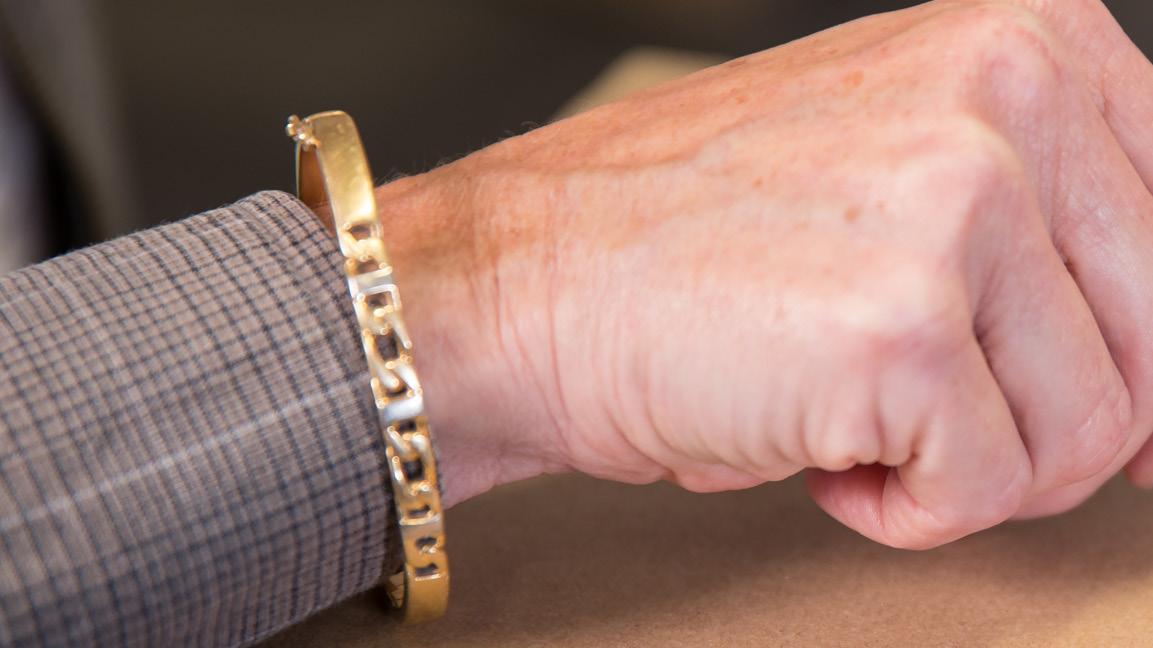
“One of the purposes of ridings is to properly represent the voters, to have a voice for a specific group of people at the National Assembly,” asserted Napartuk. “[Nunavik] would have the same argu ment as similar ridings – I’d say it’s even more critical for Eeyou Istchee as it has a much bigger population than we have.”
The two-time mayor of Kuujjuaq believed that Nunavik Inuk and Cree Eeyou voices were not considered in the wider campaign and was disappointed that the CAQ seemed only concerned with Quebec’s white francophone majority. During the campaign, Legault suggested increasing immigration would be “suicid al” and many anglophones felt targeted by his updated language law.
“The CAQ machine worked very well on its niche voters,” Napartuk told the Nation. “It provided a message they need
Quebec woke up after the October 3 provincial election to find a resounding endorsement of the status quo. While François Legault’s Coalition Avenir Québec (CAQ) coasted to its second majority with 90 of 125 seats, the story behind the headlines had many analysts calling for election reform.by Patrick Quinn
Local Journalism Initiative Reporter
Unrepresented
Cree and Inuit voters concerned with Quebec electoral system that shuts them out
to look after themselves and did not even try to convince other groups of society or cultures. The entire Native voice and the challenges and realities we have in the whole province was a non-issue.”
While some have suggested that nei ther Indigenous candidate was elected because the Indigenous vote in Ungava was split, Napartuk responded that the more choices there are, the better. He maintained that low voter turnout was the bigger obstacle to electing an Indigenous candidate and often says that the young populations aged 18 to 35 in Nunavik and Eeyou Istchee “can literally decide who gets voted in.”
However, many who did come out to vote reported being turned away when their names weren’t on the voter list. Unlike in federal elections, people cannot be added on election day by swearing an oath, producing two pieces of identifica tion and proof of address.
“In most of our 14 Nunavik communi ties, there were complaints about names not being on the list,” confirmed Napartuk. “Elections Quebec needs to do much better preparation to ensure every voter
understands the process, not just a cou ple of weeks before the election date.”
With even people who showed up for advance polling and took necessary steps unable to vote, Napartuk said there needs to be someone from the region to coordi nate and make last-minute adjustments in consideration of the region’s isolation and remoteness.
According to Elections Quebec, it is the responsibility of the voter to ensure their information is correct and they are on the voter list. A spokesperson said they made voting and revision information available in eight Indigenous languag es, including Cree and Inuktitut. There was advance voting by mail in remote regions and revision teams were sent to 23 Indigenous communities during the last week of September.
In Eeyou Istchee, even some peo ple who received their voter card in the mail with their correct name and address couldn’t vote. Some who had lived for many years at the same address and voted provincially without incident in the past either didn’t receive voting cards in the mail or received cards without their name on it.
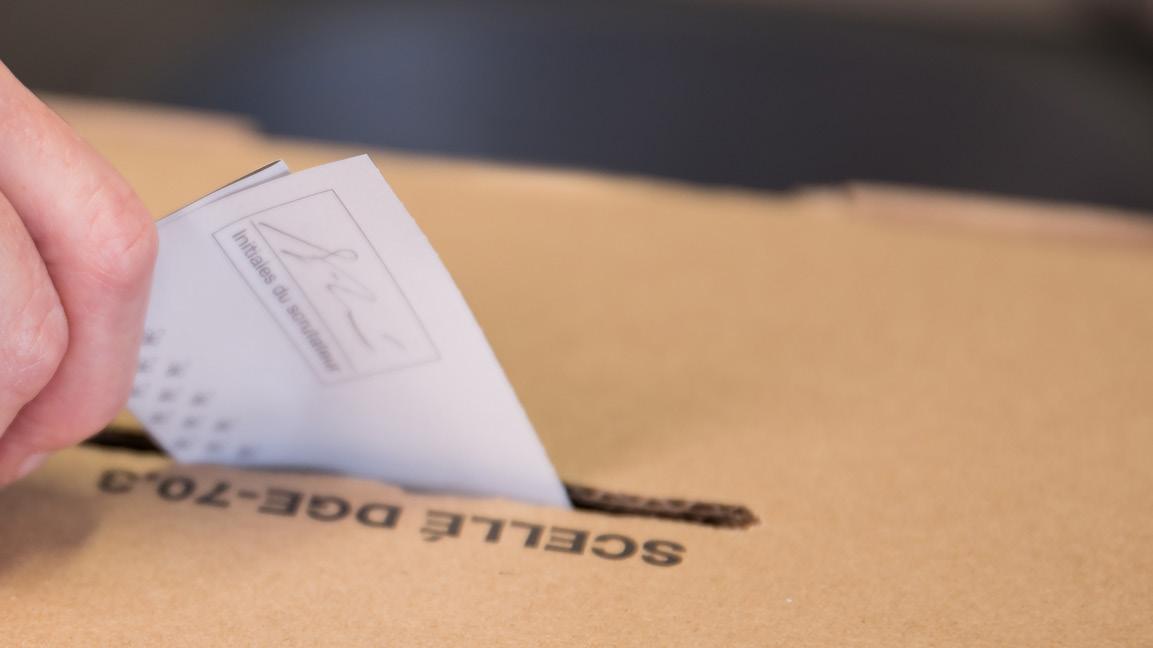
“This is the first time we couldn’t vote,” Chisasibi’s Gracie Chiskamish Sealhunter told the CBC. “I always vote. We didn’t have problems before.”
“Many Crees and Inuit were denied voting at the polls, even if they were previously on the provincial list,” tweeted Labrecque-Saganash. “Since the first day of campaign I’ve tried to raise awareness on the challenges to access democracy in Nunavik and Eeyou Istchee, but no one listened.”
Waswanipi’s Labrecque-Saganash mobilized many voters with her passion ate advocacy for Northern issues like improving infrastructure, accessible housing and healthcare reform. The Cree Nation Government thanked her “for a very courageous first run that had us on the edge of our seats all evening.”
“Mista mikwetc for daring and hop ing to make a difference by bringing our voice to the National Assembly,” the CNG tweeted. “We hope that your campaign inspired others to contribute to shap ing the political and social landscape of Eeyou Istchee.”



Clownfest featured cutting-edge Indigenous performers
Indigenous performers at Montreal’s 2022 Clown Festival in late September provided the city with many unique forms of laughter-inducing enter tainment. The Montreal Clown Festival Cabaret opened the event September 29 with an “immersive, spirited and wildly diverse gala… a fool’s gar den [where] even our audi ence guests are encouraged to wear their most eccentric gala attire.”
Headlining the opening night of individual acts was Hilary Wear, a Métis theatre artist. Wear is an accredit ed therapeutic clown, mean ing she works to humanize the healthcare system with expressive comedic arts while finding healing with happiness and laughter.
Wear states in her online bio that she currently trusts –and offers – three things in life: “Performance (through Clowning), Indigenous Seasonal Culture-Grounded-mind-bodyspirit-emo practice (through Qi Gong-ing), and natural law (through Anishinaabemowin and Medicin-ing).”
Another group was Tupiq A.C.T., a Nunavik-based crew of Inuit circus performers. The group promotes Inuit cul ture, the exchange of skills and knowledge, and aims to
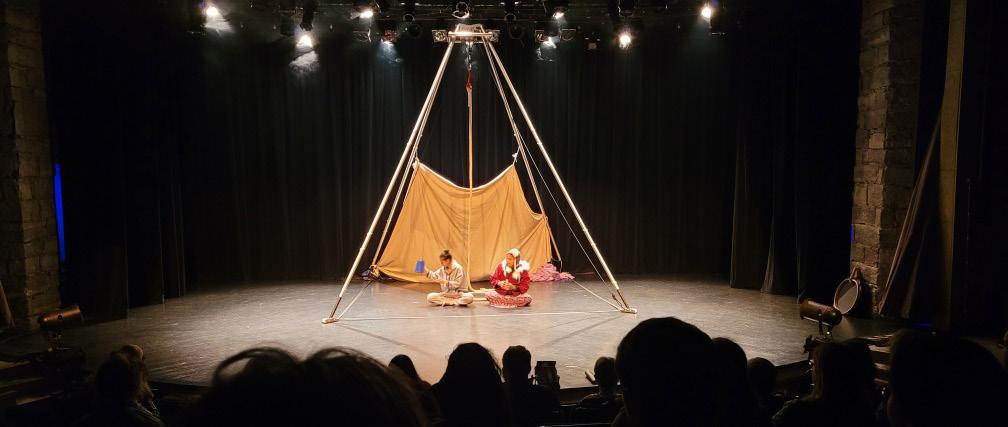
be positive examples for the younger generation.
“Our Inuit culture is impor tant to us, and we wish to preserve and celebrate it fully,” the group stated. “We create shows based on Inuit myths, legends and storytell ing through contemporary cir cus arts.”
The group hopes to forge connections with various Indigenous groups across Canada, giving them a chance to express themselves and their cultures in similar artistic fashion.
“As a troupe, we want to present who we are and what we are capable of. We want to break stereotypes about our people and show that we can amount to anything we set our minds to. We want to share the healthy and positive way cir cus has impacted our life with Indigenous youth in our com munities so they can find new ways to express themselves.”
The festival also included discussion sessions with film and theatre directors. Barry
Bilinsky, an Indigenous artist of Métis, Cree and Ukrainian lineage from Edmonton, called his talk: “Clarity and Compassion: how to do more good than harm”. Described as a collaboration centred on clowns, comedy and beyond, the discussion was designed to be guided by “Indigenous worldviews…speakers will share their relationship to the territory, its importance to their work and the responsi bilities we carry for our com munities.”
Ouje Fire Department needs new vehicle
Ouje-Bougoumou Fire Chief Bradley Bosum said his depart ment is looking to acquire a new utility vehicle that can fit their vehicle extraction tools, including the “jaws of life”, used to cut open and spread apart vehicles involved in col
lisions to help extract victims stuck inside.
Bosum said he was opti mistic the band would approve the request for the vehicle once it gets to the manager’s meeting, but that it may still take months to acquire the vehicle. .
Waswanipi getting new Forestry building
The Cree Nation Government Department of Capital Works and Services confirmed they were in the process of con structing a building to be used as the headquarters for the new Forestry Department.
John Longchap, Director of Capital Works and Services, said that the project would have been finished by now if not for delays due to Covid, but that he expected it to be completed soon.
He explained that the Forestry Department used to be under the Environment and Remedial Works Department but separated about four or five years ago. Since the staff was spread out between Mistissini and Montreal, the decision was made to build a single office for the depart ment in Waswanipi, where a lot of forestry is concentrated. Indigenous youth in the prov ince.
Walking for reconciliation
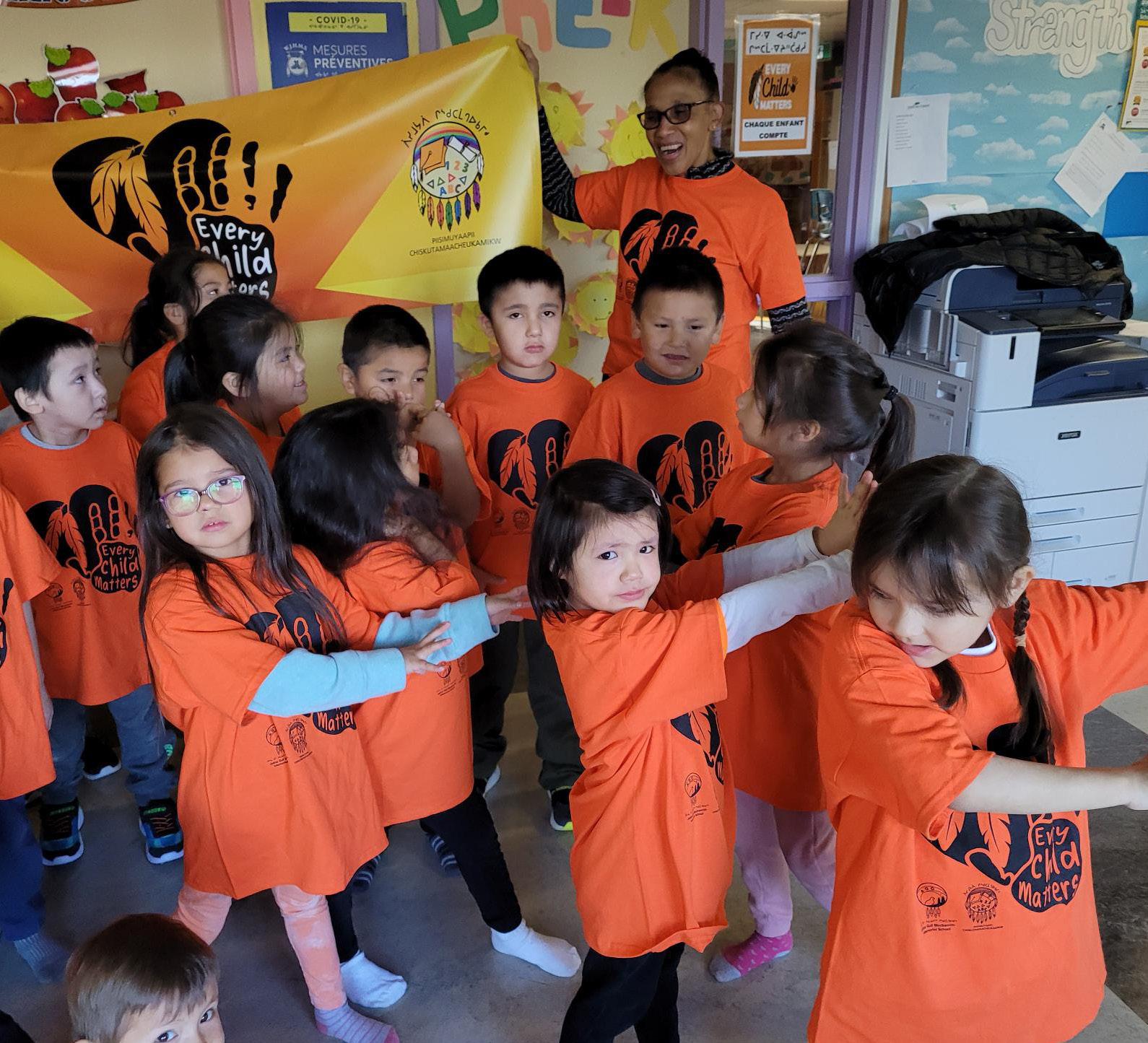
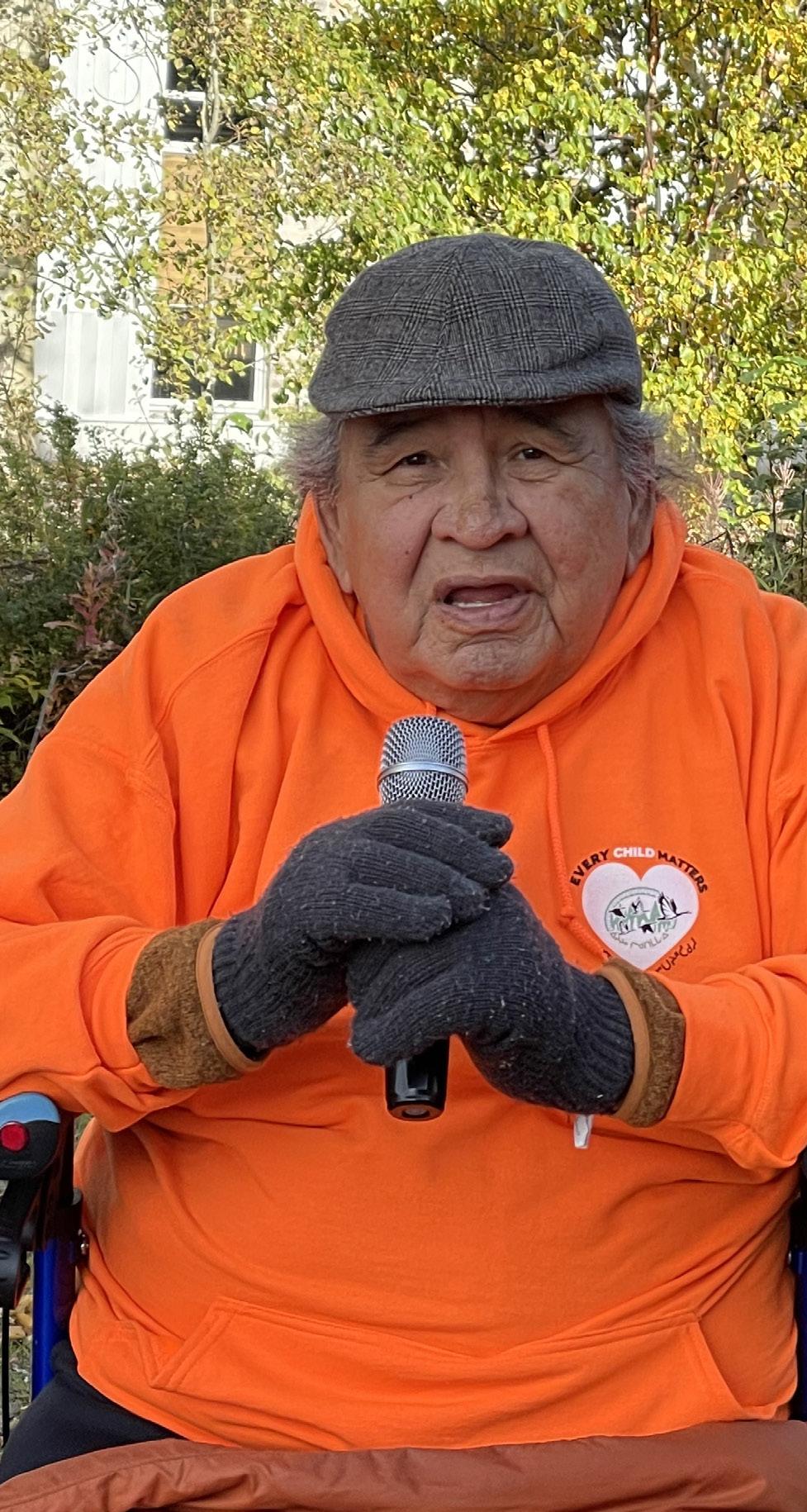
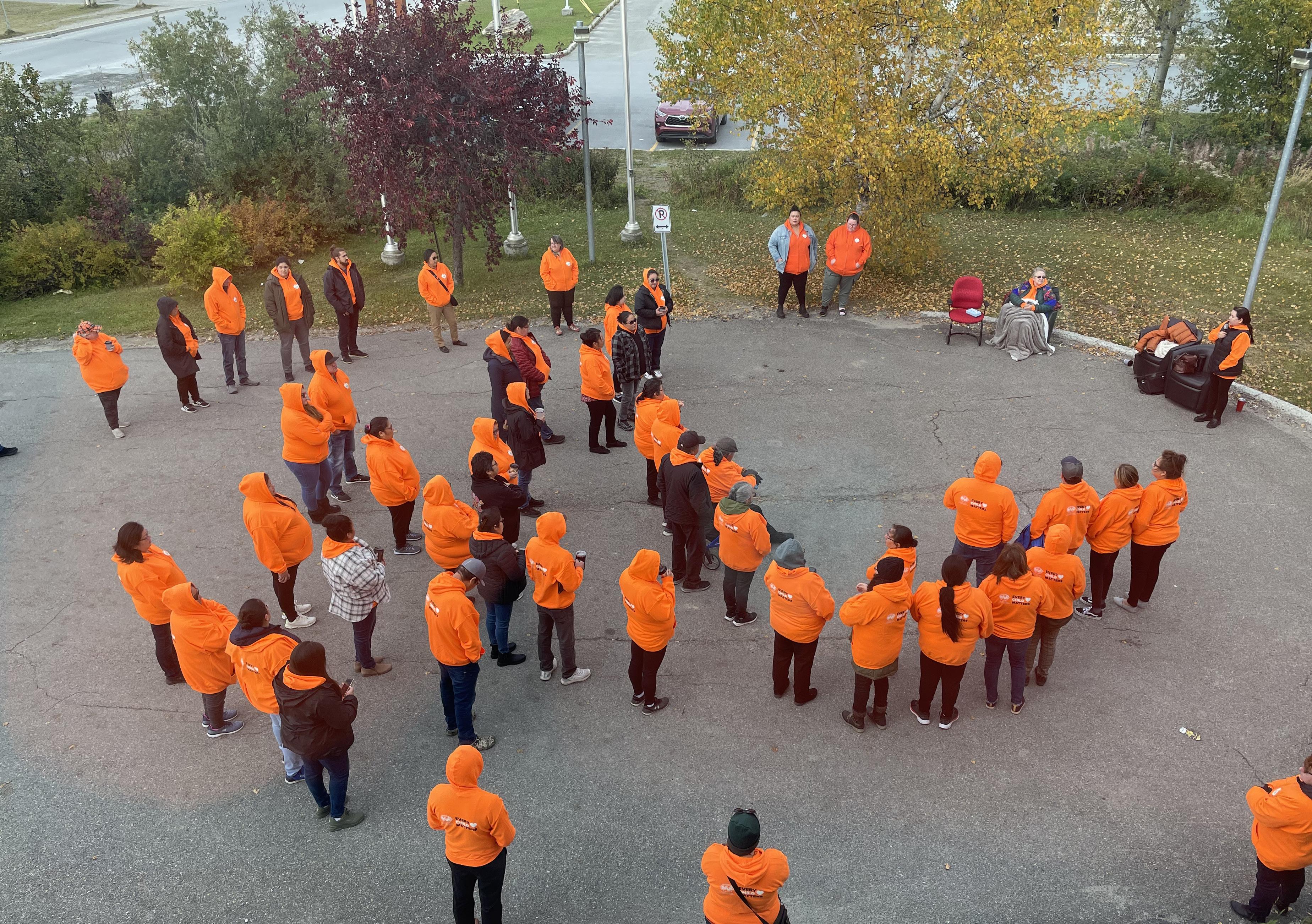
Liberating

Cree schools mark Orange Shirt Day with community events
Elders’ knowledge
by Ben Powless, Local Journalism Initiative Reporter Photos provided by the CSBSchools across Eeyou Istchee marked the National Day for Truth and Reconciliation on September 30 with several activities.
It was originally called Orange Shirt Day for the grassroots initiative started in 2013 by Phyllis Webstad, a residential-school survivor from British Columbia, who had her orange shirt taken away on her first day attending Mission Residential School. Schools and educators across the country have been using it as an opportunity to teach about what happened in residential schools.
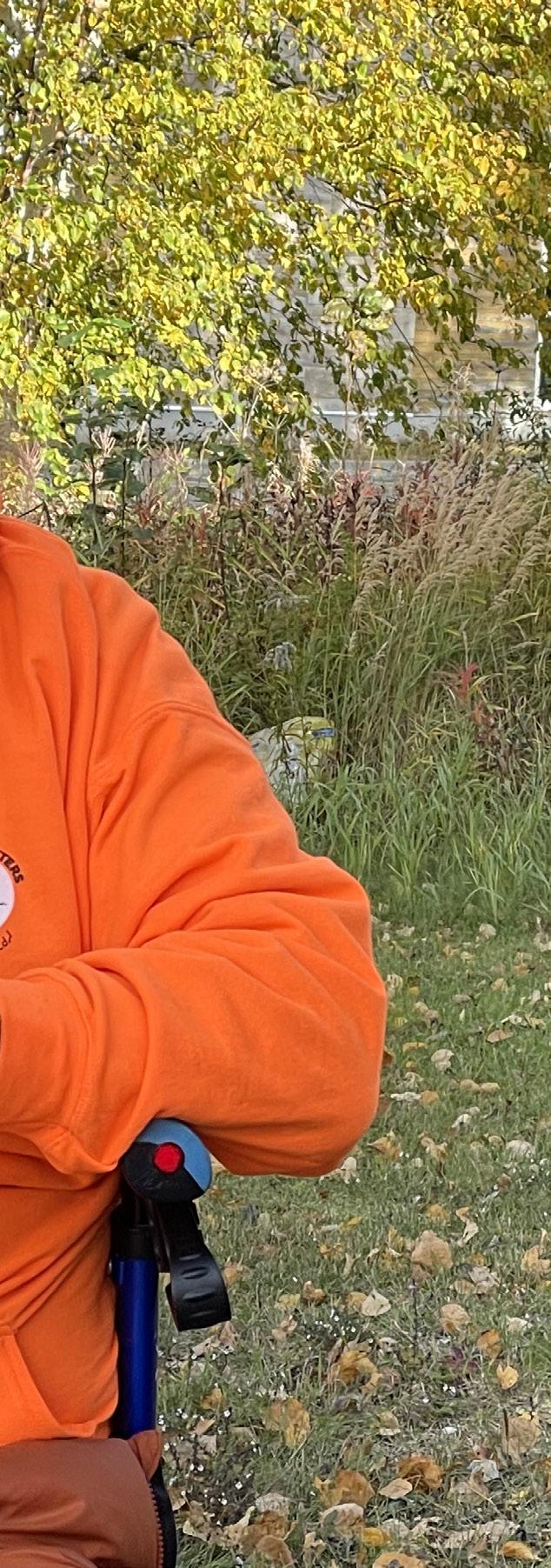
At the Cree School Board’s head office in Mistissini, employees gathered in the parking lot to mark the occasion, starting with a prayer by Elders Henry and Bella Mianscum.
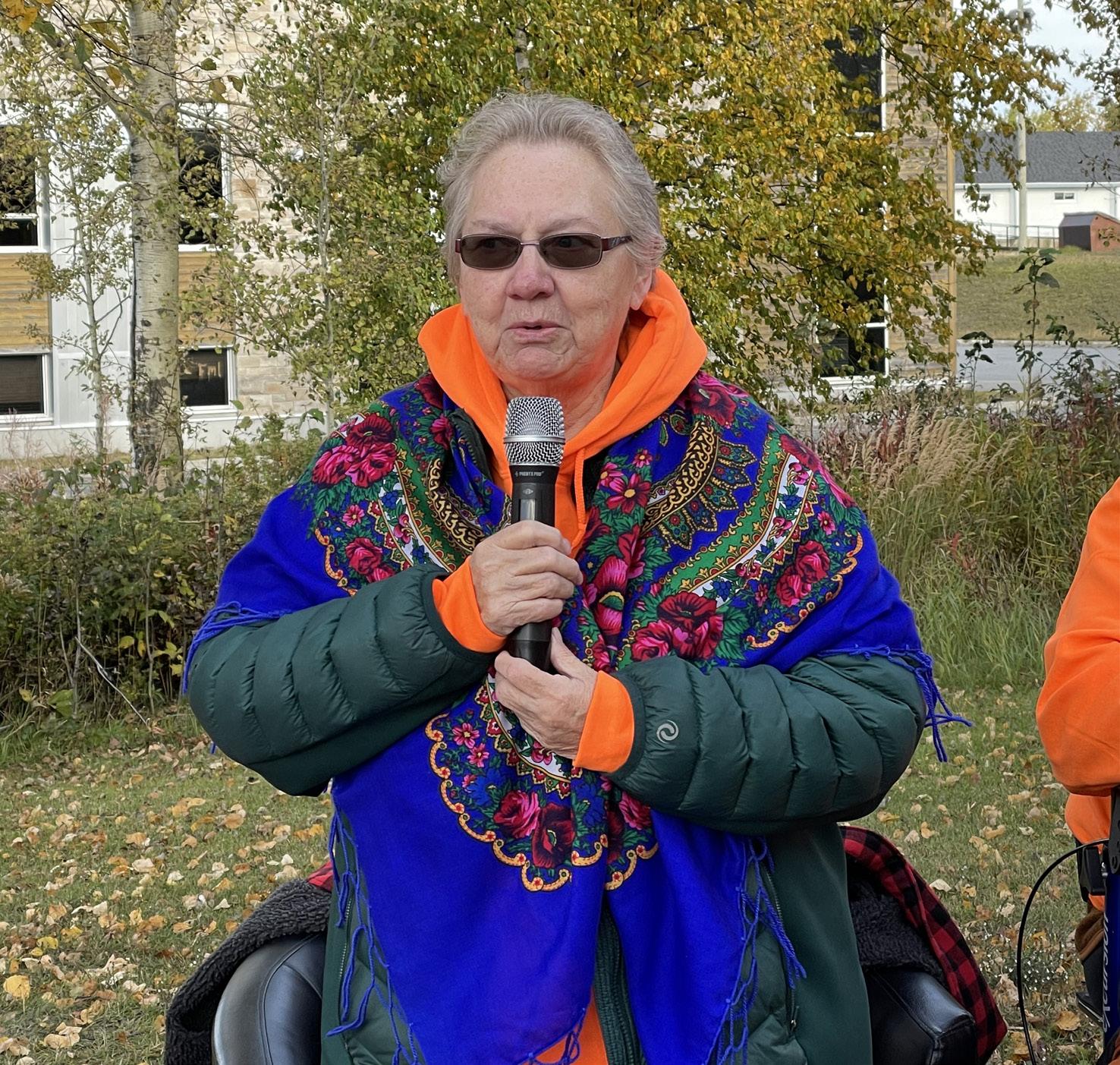
Henry used the opportunity to share his experi ence being taken on a plane to residential school, not knowing what was happening, and realizing only later the injustice of being taken away from his family. “I remember two people coming to the community, one was a man, and another one was dressed in red,” he said.
CSB Director General Caroline Mark then gath ered employees in a circle and asked for resi dential-school survivors to enter the circle, fol lowed by those with family or friends who attended. She explained that everyone in the communities is affected by what happened in the schools, that the CSB strives to ensure every child matters in the schools and communities.
Following a moment of silence to remember and honour the children who attended and those who didn’t make it home, CSB Secretary General Doreen Blackned offered a closing message about being a survivor of the schools.
At the École Luke Mettaweskum School in Nemaska, Principal David Lee said the students coloured their own orange shirts, which were used to decorate the schools. Students received tra ditional snacks that day, including Indian donuts, bannock and boudin.
In the school teepee, a community Elder read to elementary students from a storybook called Stolen Words. Meanwhile, secondary students watched a documentary film about residential schools called We Were Children. They also had a guest speaker, Emily Henry, the Law Development Coordinator at
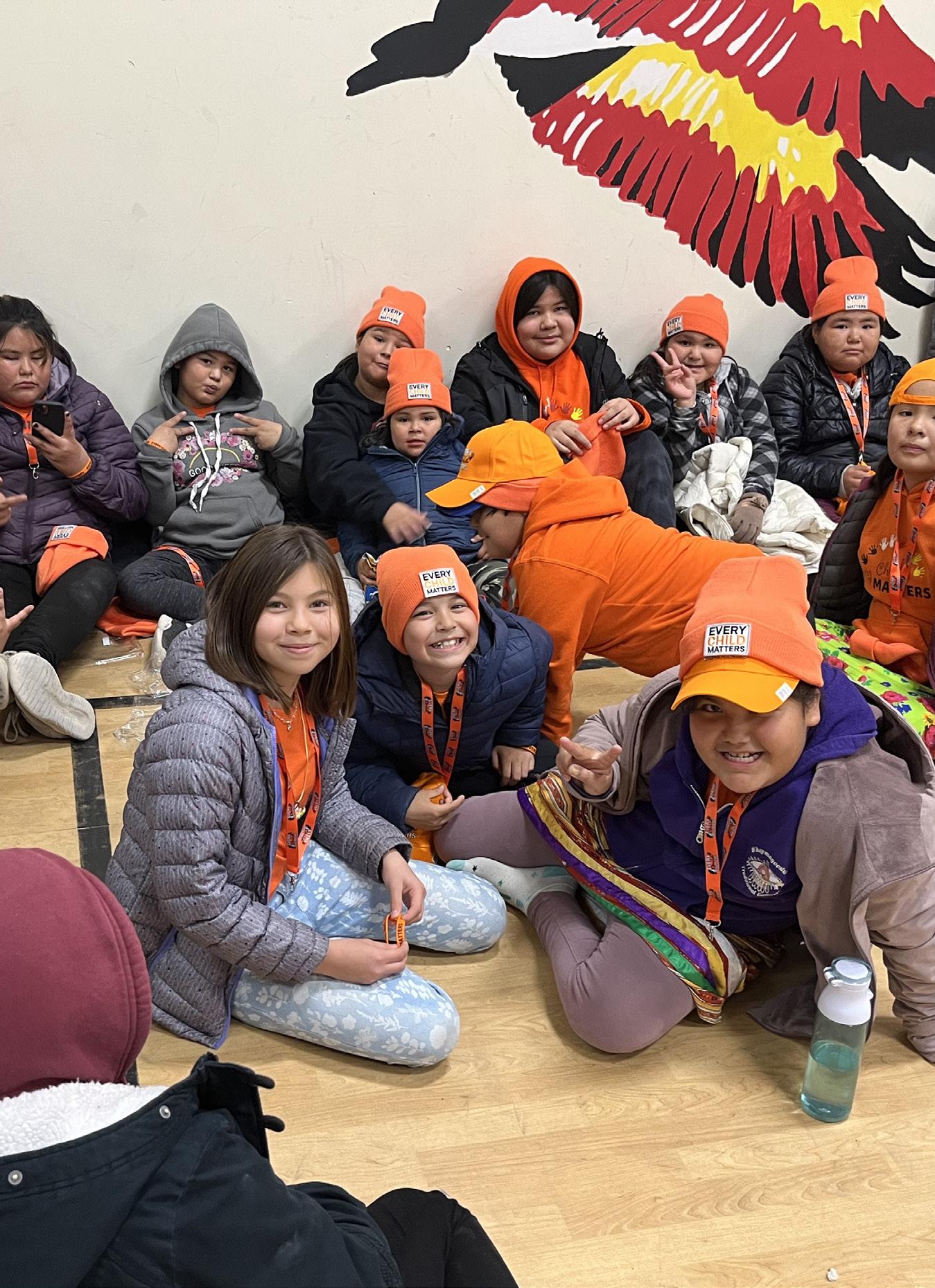
Ochopowace First Nation in Saskatchewan. Later in the day, the school organized an Orange Shirt Day community walk with stu dents, parents and other community mem bers.
The Badabin Eeyou School in Whapmagoostui worked with Public Health, Child and Family Services, the Whapmagoostui Youth Council and the Cultural Department to organize their own community walk and games.
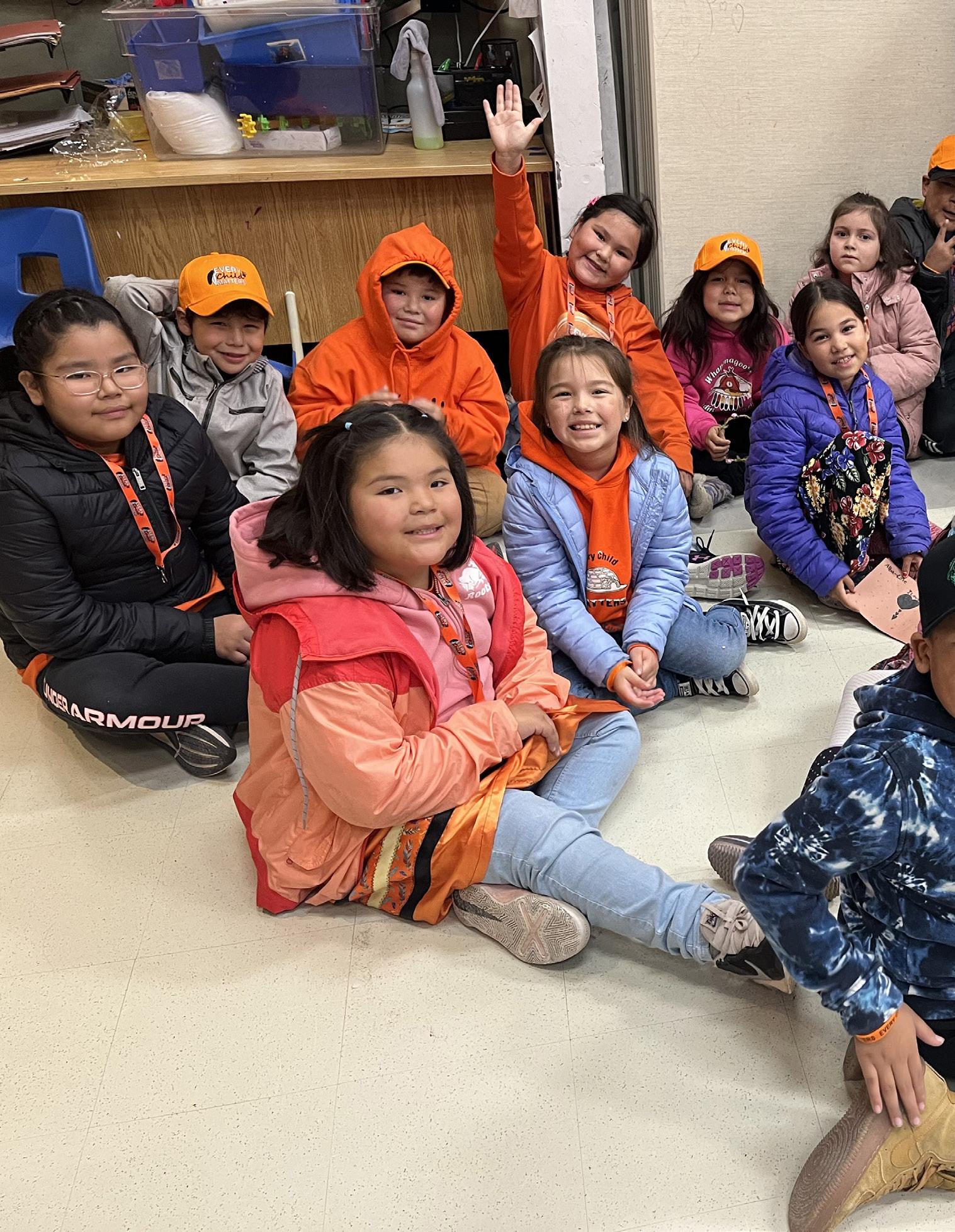
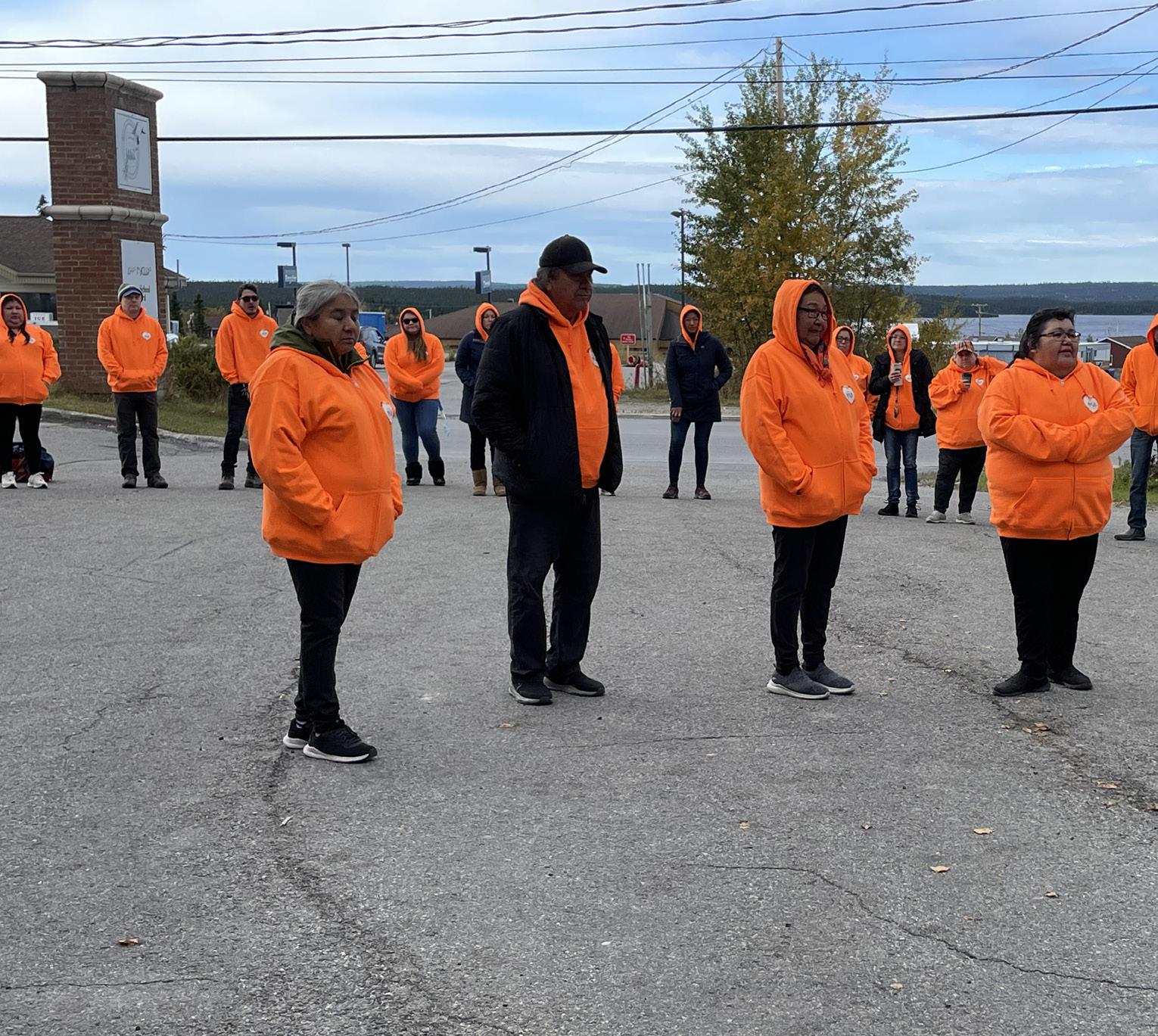
Deputy Chief Rita Sheshamush-Masty addressed the students, staff and community members about the importance of the day before beginning the walk. Afterwards, the youth council organized several games to showcase their resilience and strength.
In the evening, the community held an out door display and held games over the radio. Principal Ashley Burke said she was proud to have come together as a community to honour the survivors and children who didn’t make it home.
In Niagara Falls to mark the occasion, Prime Minister Justin Trudeau highlighted the recently appointed Special Interlocutor for Missing Children and Unmarked Graves and Burial Sites, Kimberly Murray, whose posi tion was created after the discovery of mass graves at several former residential-school sites.
“On this day, which is also known as Orange Shirt Day, I invite everyone to listen to survivors and learn more about the history and legacy of the residential school system by participating in a local event or wearing an orange shirt,” said Trudeau. “Let’s take a moment today to participate, learn and reflect. We all have a role to play on the journey toward reconciliation.”
“Everyone in the communities is affected by what happened in the schools”
- CSB Director General Caroline Mark
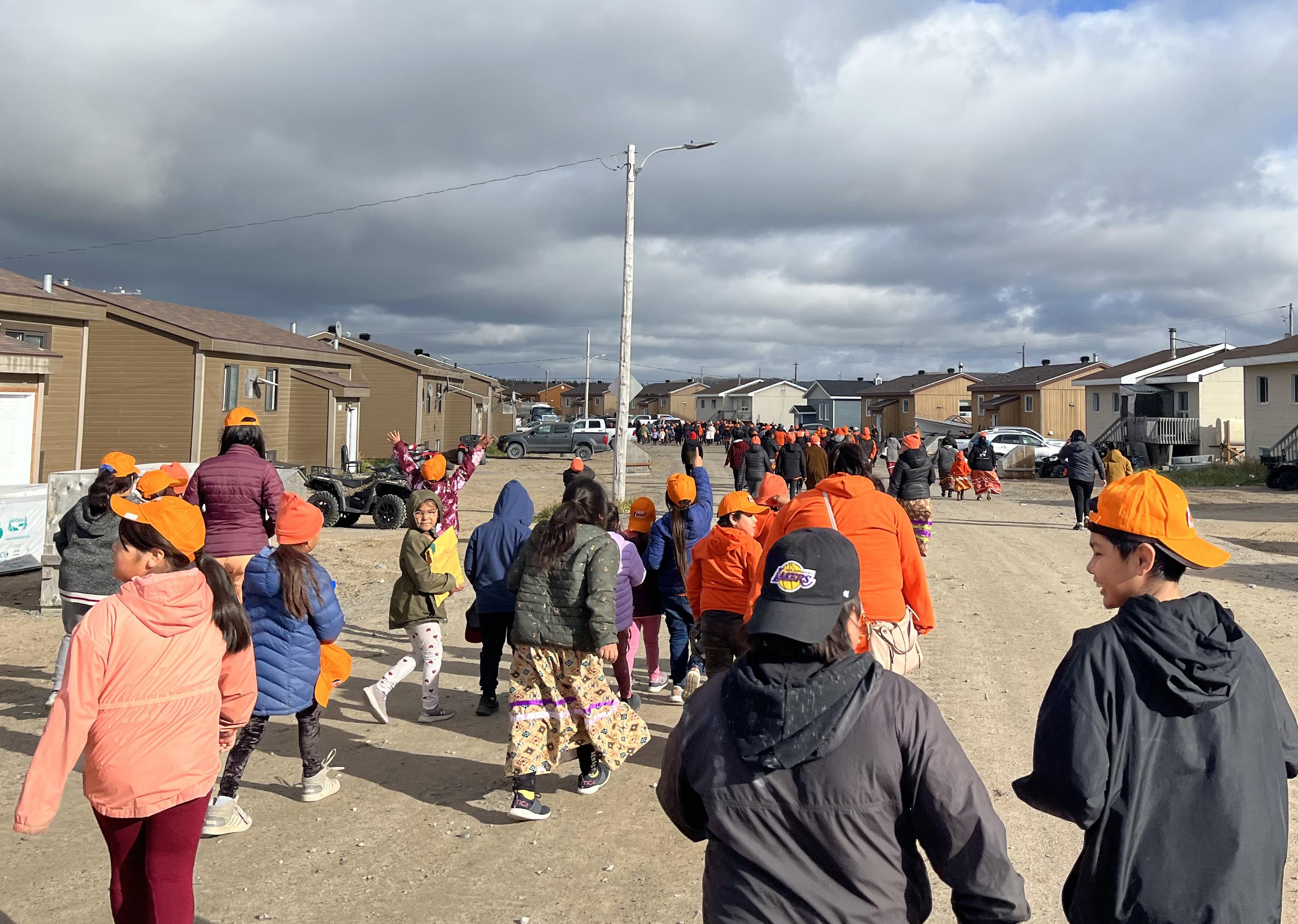
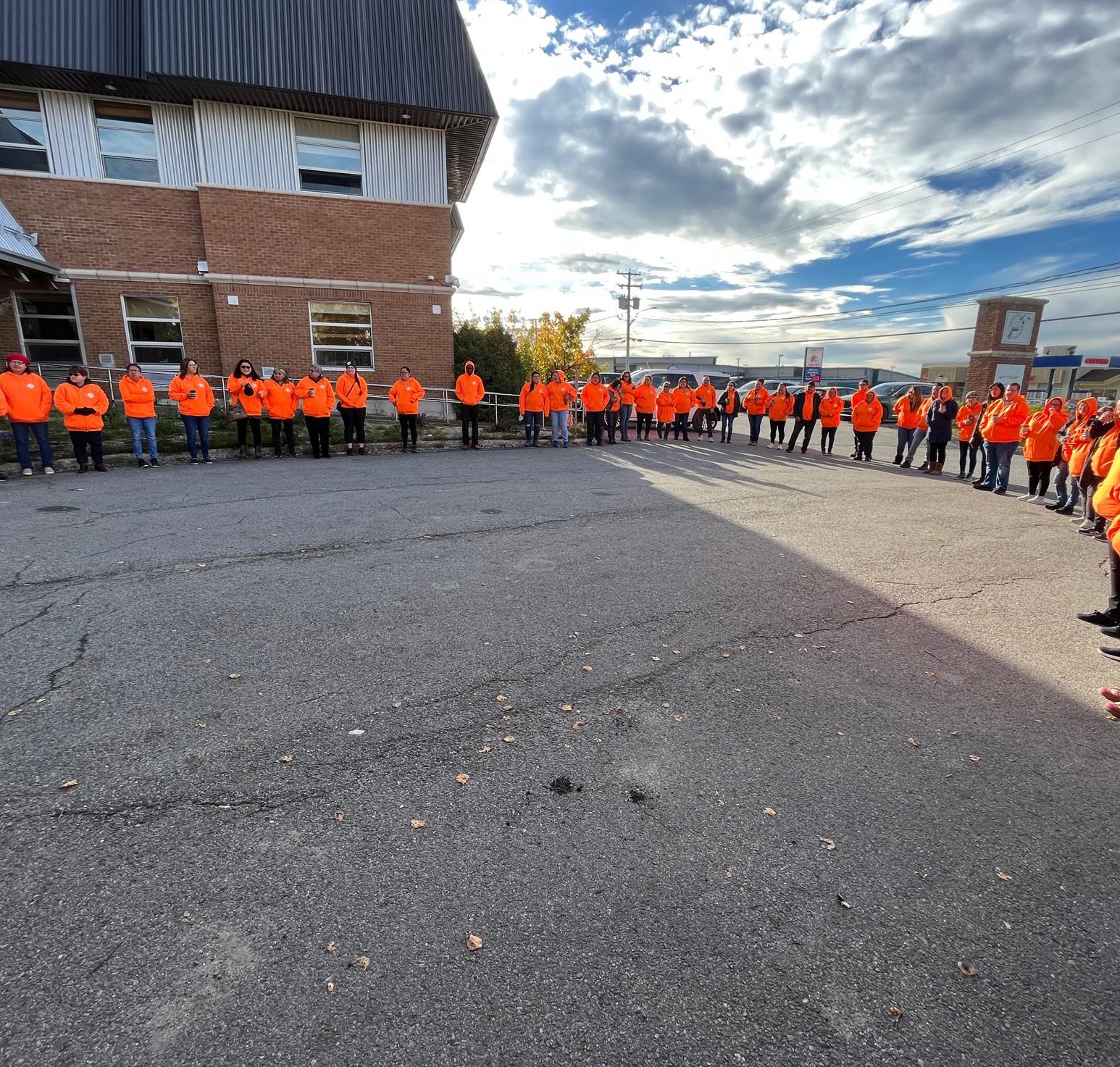

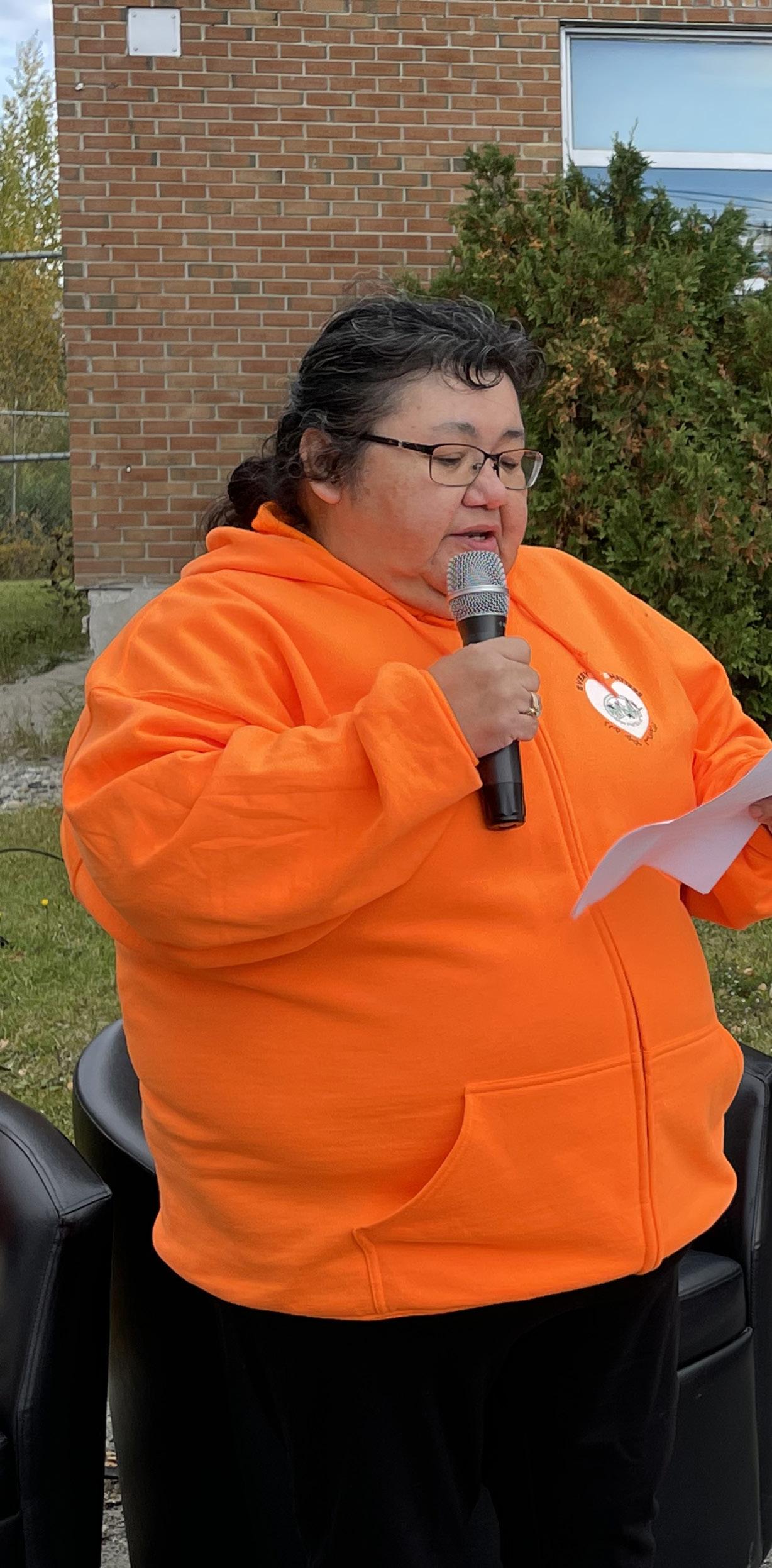

Timiskaming Dam-Bridge of Quebec Replacement Project Participant Funding Available
September 27, 2022 — Funding provided by the Impact Assessment Agency of Canada (the Agency) is now available to help the public and Indigenous peoples participate in the environmental assessment process for the proposed Timiskaming Dam-Bridge of Quebec Replacement Project, located in Quebec.
Funding is available to assist eligible individuals and groups to participate in the upcoming environmental assessment process. These steps include reviewing and providing comments on the proponent's Environmental Impact Statement or the summary thereof, and the Agency's draft Environmental Assessment Report and potential conditions.
Applications received by October 27, 2022, will be considered.
To apply for funding, contact the Participant Funding Program by writing to fp-paf@iaac-aeic.gc.ca or by calling 1-866-582-1884.
The Agency will announce the start of the public consultation period on the summary of the proponent's Environmental Impact Statement at a later date.
For media inquiries, contact the Agency's media relations team by writing to media@iaac-aeic.gc.ca or calling 343-549-3870.
Stay updated on this project by following the Agency on Twitter: @IAAC_AEIC #TimiskamingDamBridge
The proposed project
Public Services and Procurement Canada is proposing to replace the Quebec Timiskaming dam-bridge. The dam-bridge spans the Ottawa River, connecting the provinces of Ontario, 65 kilometres northeast of North Bay, and Quebec, at Temiscaming. The new structure would include a two-lane roadway and a sidewalk and would regulate water levels on the river. It would be approximately 75 metres long, and have ten bays with vertical sluice gates. The construction of the new dam-bridge would take place over 30 months.
More information on this project is available on the Canadian Impact Assessment Registry website, Registry reference number 80151.



Portraying Our Stories
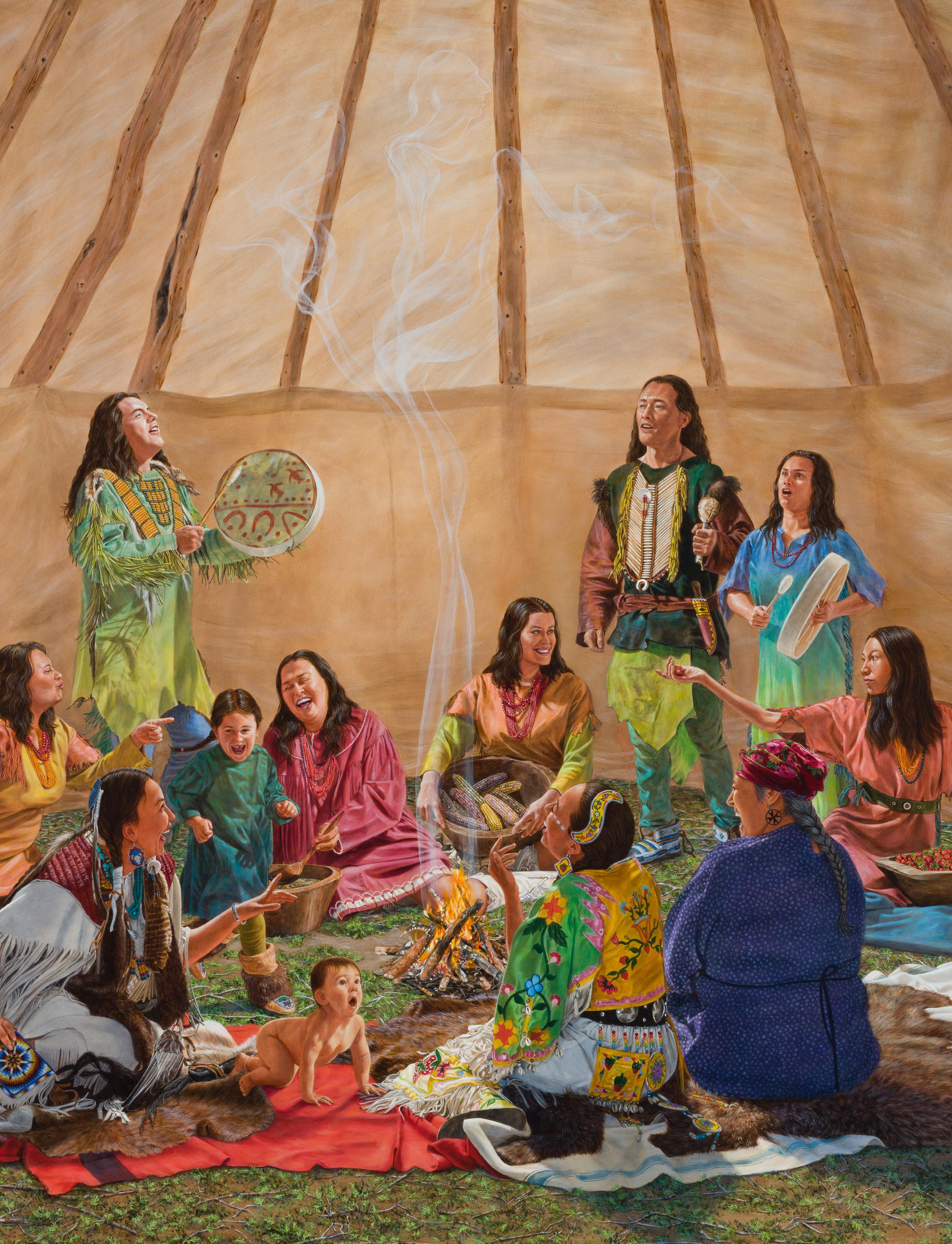
Kent Monkman’s Being Legendary exhibit at the ROM
Patrick Quinn, JournalismCree artist Kent Monkman’s exhibition Being Legendary, to be presented at Toronto’s Royal Ontario Museum (ROM) from October 8 to March 23, 2023, plays with concepts of foundational myths, narrative biases and repatriation.
The ambitious installation features a series of 35 figurative paintings situ ated amid cultural belongings from the museum’s extensive permanent collec tion that recontextualize history from an Indigenous perspective.
“I am exploring how Indigenous pres ence and knowledge is embedded in this land much longer and deeper than how it’s been presented in the colonial version of history here on Turtle Island,” said Monkman. “Using storytelling, this exhi bition refers to the interruption of knowl edge caused by the colonial attempts to erase us, but it also talks about life before Europeans arrived and how leaders in our communities shine a path for us to move forward into the future.”
The Royal Alberta Museum announced it would return to the Plains Cree the pâpâmihaw asinîy or Creator Stone just before his exhibit opens. It’s a meteorite shaped like a buffalo head that holds spiritual power and great meaning for the Cree. Monkman was thrilled by the synchronicity of this repatriation, as it had once been part of the ROM’s collection.
Monkman has sought to create change from within by serving on the boards of Toronto’s Gardiner Museum and the Glenbow Museum in Calgary, helping to shift the narrative and challenge settler artistic conventions.
As in many of Monkman’s earlier works, his gender-fluid alter-ego Miss Chief Eagle Testickle plays a prominent role in this exhibit, serving as flamboyant interpreter and subversive witness of its various sections that span from pre-co lonial times to the present and beyond. Her origin story came into sharper focus when working on her “memoirs” with longtime collaborator Gisèle Gordon.
“Miss Chief was created to inhab it a more empowered understanding of Indigenous gender identities and sex uality,” Monkman explained to The Art Newspaper. “In old Cree there were no words to distinguish gender because it
just didn’t matter. The Miss Chief charac ter was born out of this desire to reverse the gaze and say, ‘Hey, as much as you’re looking at us, we’re looking at you.’”
With tongue-in-cheek delivery, the opening paintings position Miss Chief within Indigenous cosmology as one of the universe’s creative spirits, juxtaposed with an actual meteorite from the ROM collection, explaining, “When I fell to askîy – this planet you call Earth – my form shifted from pure matter to cloud, to rain sprinkled with cosmic dust, and love.”
While the glamorous Miss Chief has provocatively appeared alongside colo nialists in Monkman’s previous works, notably his Shame and Prejudice exhibi tion, she reached a whole new audience when featured in two massive works com missioned by New York’s Metropolitan Museum in 2019.
Coming from the Fisher River Cree Nation in Treaty 5 territory in Manitoba, Monkman was an abstract expressionist painter when he began creating art in the 1990s. When he turned to a representa tional style, drawing from European mas ters like Peter Paul Rubens and the por traiture of Paul Kane and George Catlin, it was to communicate themes with more directness and urgency.
“It’s cool to watch when peo ple engage with the work because at first, they think they’re seeing one thing but then it’s the opposite,” explained Monkman. “I’m using a similar medium to the painters of Western art history but communicating a worldview that is radically different to the original that I’m drawing inspiration from.”
In another of Being Legendary’s paintings, iridescent dinosaurs are inter spersed with tiny sparkling mîmîkwîsiwak people nearby an actual horned dinosaur skull, a mastodon’s upper arm bone and a mammoth tooth. Monkman wanted to make a statement about what Indigenous children are taught about the fossils extracted from their lands, which expand ed to consider the vast field of Indigenous science embedded in Cree language and culture.
“One of the big attractions at ROM are the dinosaur fossils,” Monkman noted. “I
wanted to talk about the interruption of the knowledge that Indigenous children were taught by their ancestors, which began in the colonial period. We have stories that talk about one of the mass extinctions, the receding of the glaciers –there’s science in these stories.”
The show’s colourful first half rep resents a happy pre-colonial land, liv ing in harmony with nature and guided by matriarch wisdom. That tone shifts abruptly with “Study for the Sparrow”, which conveys the bleakness of residen tial schools with a young girl trying to reach a bird through a caged window in a room barren except for a crucifix.
Another room depicts Miss Chief comforting the Indigenous chil dren of Battleford Industrial School in Saskatchewan as they are forced to witness the unjust hanging of eight Indigenous men in 1885. Next to eight pairs of moccasins from the ROM collec tion, made by Cree and Assiniboine artists “once known” over a century ago, are small paintings representing eight losses: language, knowledge, family, medicine, ceremony, tradition, joy and hope.
When Monkman began discussions with the ROM in 2017, he wanted this exhibit to address the institution’s lack of pieces related to colonialism. However, over time this part of the narrative grew smaller as he wanted visitors to realize colonialism doesn’t define Indigenous people but is rather “a short blip on this long timeline of our presence here.”
The final room looks toward a brighter future with a dozen large-scale portraits of contemporary Indigenous leaders, including Brianna Olson-Pitawanakwat, co-founder of Toronto Indigenous Harm Reduction, Inuk filmmaker and artist Asinnajaq, and Indigenous star expert Wilfred Buck (Pawaminikititicikiw).
“It was an opportunity to take this idea of Indigenous portraiture and really honour and canonize my heroes, the peo ple who I’ve met that are doing incredible work, young and old, and from diverse backgrounds,” said Monkman. “They’re all doing incredible things in their own way. That’s why I call that series ‘Shining Stars’. This is our way forward.”
Top guns
Nemaska firefighters are best Indigenous crew in Canada
by Ben Powless, Local Journalism Initiative Reporter Photo provided by Kurtis BlackLike so many kids, Kurtis Black was dead set on becoming a firefighter when he was in Grade One. Unlike most kids, he followed his dream and is the fire chief of Nemaska. Now he has added a new laurel – being part of the team that won the 2022 National Firefighting Competition organized by the National Indigenous Fire Safety Council Project.
The competition was held October 1 in Prince Albert, Saskatchewan, where six teams competed after having already won regional or provincial champion ships. Nemaska took first place in the Quebec Aboriginal Firefighter competi tion in Kahnawake last August.

Black said it was “nerve-wracking” waiting to hear the results after compet ing in the grueling events. “It was five minutes before the banquet when they announced the winners,” he recounted. “My nerves were just racing.”
Slowly, the announcers began nam ing the team that came in sixth place. When they got to second and Black heard the name of another team, Black realized Nemaska had won. “I was so happy,” he said.

At the competition, which took place on the last day of a four-day conference on fire safety, the teams competed in several challenges selected by raffle. The possible tasks include working with the hose, equipping and changing the
SCBA breathing apparatuses, or using buckets.
This year, the teams had to change a hose as if it had burst while in action. Another challenge saw them use hoses and then buckets to hit targets. A new addition this year had them create a
fire-prevention video or presentation that could be used on social media, which Black said his team was pre pared for.
Black’s son, Cody, is also a Nemaska firefighter for the past seven years who competed as part of a spare team.
Unfortunately, he was sent to the clinic for smoke inha lation during a shack fire exercise. “After everything was under control, we checked up on him. He was okay and became a champ,” Black said.
“It’s pretty fun,” he added. “It’s good experience of how everything works. Sometimes people panic their first time on the competing grounds.”
Or worse, they get too into it, and yell at the judges like at a hockey game, which happened with one of their teammates at the provincial competition. Black said that can be grounds for disqualification.
Black explained that there are different manuals avail able for the national, provincial and regional competitions that the teams can use for practice, but the exercises are like the ones the teams practice daily. His team trains an hour a day, with swimming and other fitness routines.
Nemaska’s firefighters are supposed to win equipment for taking first place, but Black said he isn’t sure what it will be. “We might donate it to a less fortunate fire depart ment that needs the equipment, because one of the fire departments we competed against only had a garage to keep the fire truck warm,” he said.
“I’m just happy with the bragging rights,” Black added with a laugh, noting that he was part of a winning team in 2009 when he worked for the Waskaganish Fire Department, where he grew up.
Now, after 24 years in the service – he joined at 14 before bylaws required firefighters to be over 18 – he’s starting to think about retirement. But first, he’s planning for next year: “We’re looking forward to defending the title.”

include working with the hose, equipping and changing the
breathing apparatuses, or using buckets
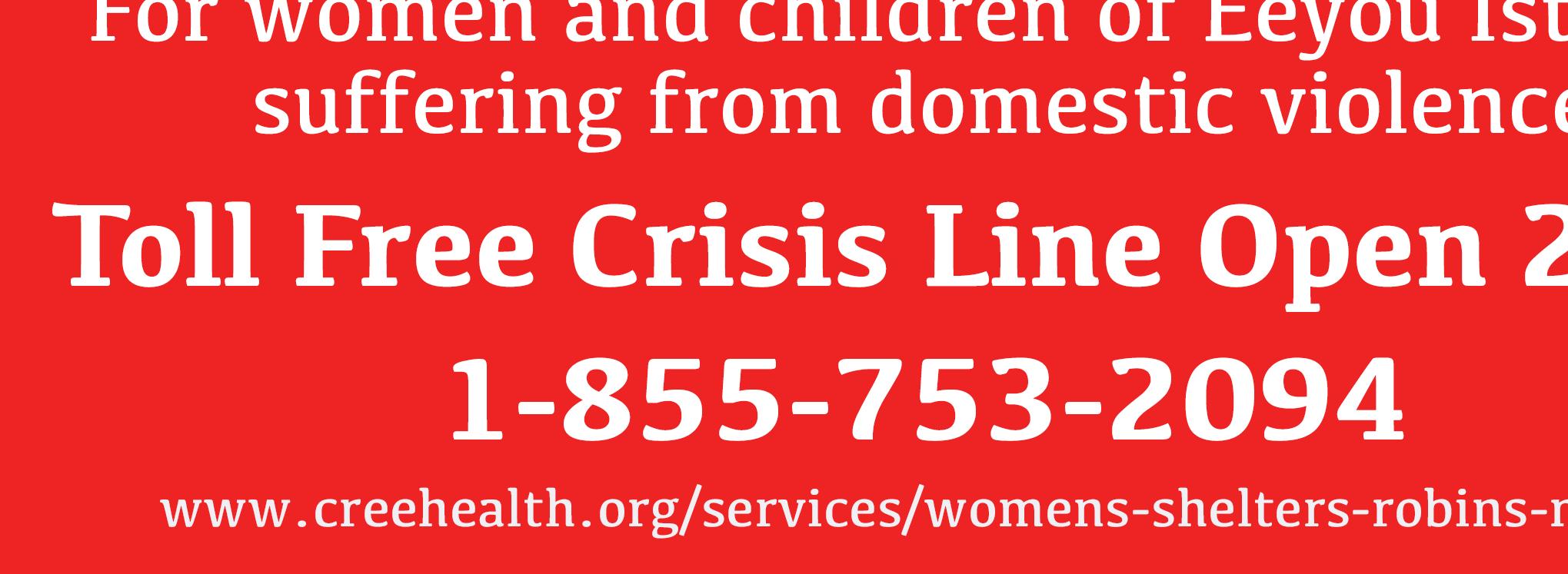



Art and activism
Annual Indigenous events return to Montreal
by Joshua JankeTwo Indigenous events highlighted the end of September in Montreal
– McGill University’s Powwow (September 23) and Montreal’s march for National Day of Truth and Reconciliation (September 30).

The powwow was organized by McGill’s First Peoples’ House and this year’s celebration marked a return to in-person dancing after a two-year Covid hiatus. The First Peoples’ House is a McGill student service dedicated to providing a sense of community and voice to Indigenous students who leave their home communities to pursue high er education in Montreal.
For newly appointed Associate Provost Celeste Pedri-Spade, the cel ebration marked her first powwow on Quebec soil. An Ojibwe scholar and artist, Pedri-Spade hails from Lac des Mille Lacs First Nation in northwestern Ontario.
“I am delighted to attend my first McGill powwow,” she said, her son Keeshig by her side. “My family and I, we are a family of dancers. But we have only been in the province for 23 days, so it is our first powwow in Quebec.”
Pedri-Spade will oversee McGill’s Indigenous Initiatives program, includ ing the 52 Calls to Action established by the Provost’s Task Force on Indigenous Studies and Indigenous Education.

“Since my arrival here, I have wit nessed everybody’s determination and commitment to fulfillment,” she stat ed. “Powwow has always been about bringing people together, ending con flict, and expressing gratitude. Powwow is where important discussions take
place, discussions that deal with every thing from the wellbeing of our families to our collective visions for our broader communities and nations.”
Pedri-Spade and her son Keeshig finished the speech together, singing a traditional song of gratitude for the powwow dancers and attendees.
With the Six Nations Flag flying high and replacing the usual McGill emblem atop the McCall MacBain Arts Building, the university’ lower campus was filled with Indigenous dance, art, organiza tions and food stands. The day’s events included the Grand Entry, Inuit throat singing, traditional dance exhibitions, Maori Haka dancers, and a hoop dance demonstration.
Eric Côté, an Abenaki and Métis drummer for the drum group Travelling Spirit, has been to many McGill pow wows in the past, but noted that this year’s brought him a new sense of excitement.
“I was really happy to see the Six Nations flag on top of the build ing behind us,” he told the Montreal Gazette. “I was jumping up and down for a couple of minutes, I was so happy. Having that flag on the building like that means recognition and I am hoping to see on-the-ground action. Doing this sort of thing is a part of it.”
Montreal’s second annual march for National Truth and Reconciliation creat ed an orange flow of urban Indigenous activism and solidarity September 30. The march is organized by Nakuset, the executive director of the Native Women’s Shelter of Montreal and co-di rector of Resilience Montreal.
“Come and support us, come walk through our moccasins,” Nakuset said in a powerful pre-march speech. “Because if every child matters… show up. If you are feeling outraged, then show up in numbers. It sends a mes sage to the government.
“Someone decided to dig that grave, someone decided to put a child in there, someone decided that they were not going to tell the families. [Premier François Legault] is someone who says systemic racism does not exist, yet we live it every single day, we fight it every day.”
Along with Nakuset, Ellen Gabriel, Kahnawake Grand Chief Kahsennenhawe Sky-Deer, Chief Jessica Lazare, and Elisapie Isaac also spoke.
Isaac, an Inuk singer-songwriter, filmmaker and activist, quoted Innu doctor Stanley Vollant to remind the crowd that through acknowledgement
of Indigenous voices, past and current wounds can begin to heal.

“We might be sick now, we might have great pain, but with time, maybe in a few generations, we will be healed,” she said. “But for now, to move towards healing, we need to be heard, and to be given space. The politics may try to divide us, but I still want to try to believe in Quebec. I think we are all here today because we have hope.”
Grand Chief Sky-Deer said that moving forward means acknowledging Indigenous history, while creating a country where Indigenous individuals have equal opportunity to succeed.
“Canada is a rich country, and we still have so much poverty in Indigenous communities,” she said. “All these cycles of addictions and the current situation we find ourselves in is a tes tament to how the government and the churches tried to break our people. But you look around, we’re still here. We’re still proud.”
NATION



The end of fall
by Sonny OrrOur pan is filled with fatty caribou meat, all diced up and waiting to boil. It’s a dangerous concoction, as stories are told of someone who choked on the thick liquid fat after sipping a cold drink. This meat is so rich, you need hot water to wash the fat down your throat, so it doesn’t gel and get stuck, caus ing asphyxiation and possible death. So, make sure to have a hot tea or drink in hand.
The meats simmer slowly to draw out as much fat as possible without overcook ing it. My job is to make sure it doesn’t burn. I check and everything looks hunky dory. Perhaps it’s not my day to suffocate as I prepare some hot tea, just in case.
As I wait for this gracious gift from a good family friend to be ready to eat, I think back to the times when caribou were scarce, just as the rabbit and ptar migan were for many years. I figure they just walked, hopped or flew elsewhere where food was more abundant and now that those lands are used up, it’s our turn again. The rare muskox has shown up a few times this year, rambling along like a sombre cow, chewing its cud of willow leaves, something that’s harder to find in its taiga homeland.
Further north, the snow goose seems to hang out longer than usual and the locals are a little tired of the same diet and wish they would head south for us hungry folks to harvest. Hopefully, those geese will make a pit stop here before heading down to the St. Lawrence Seaway and eventually Texas.
Whether the weather turns out good or not, it’s always safe to blame Mother Nature
As for the other animals, it seems that a lot of fat is being accumulated and this might not be good news for us hairless humans. When an animal stocks up, it means something to them. I’m pretty sure they’re not fattening up so we can har vest and eat them. Perhaps if we look to the past and our cultural knowledge, we could safely say that a cold, hard winter is coming and better stock up on everything, especially those fat animals.
Today, it would be a warning, like change your tires and check your anti freeze, make sure that those wipers are good and that the blinker fluid is winter rated. Have a flare handy just in case you need to start a blaze in the middle of the road during the worst winter storm ever.
So much for good news, it just might mean that I could be terribly wrong and Indian summer is just taking its time, so no real need to put those tire chains on yet. Many times, the best meteorol ogist’s name has blown out the window when showers were called, and everyone stayed inside on the sunniest day of the month. It could be that the forecasters
have just got it down in simulations that there’s a glitch in the weather matrix and they haven’t bothered looking out the window.
As for me, it’s only a matter of time before my tires sprout studs. I’m not even sure if they’re legal in la belle province – if not, they should be. The same with heated windshield wipers and most of all, batter ies that thrive in the cold. If that was pos sible, then the North would be conquered once and for all, at least where there’s a road. Where there’s no road, there is the good old unreliable snowmobiles of today. New machines need technicians and computer programming skills, back in the day, we simply relied on snare wire.

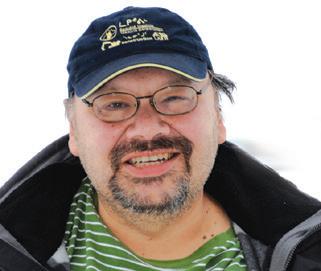
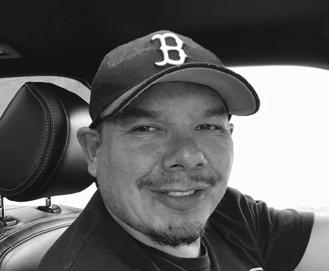
Whether the weather turns out good or not, it’s always safe to blame Mother Nature when things go south, like with hurricanes and tornadoes. We don’t have too many volcanoes to worry about, but if Iceland turns into the world’s biggest hot tub, we could be in for a surprise. Otherwise, enjoy nature people, enjoy.
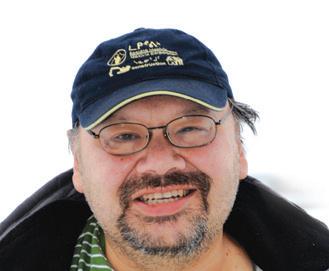
&
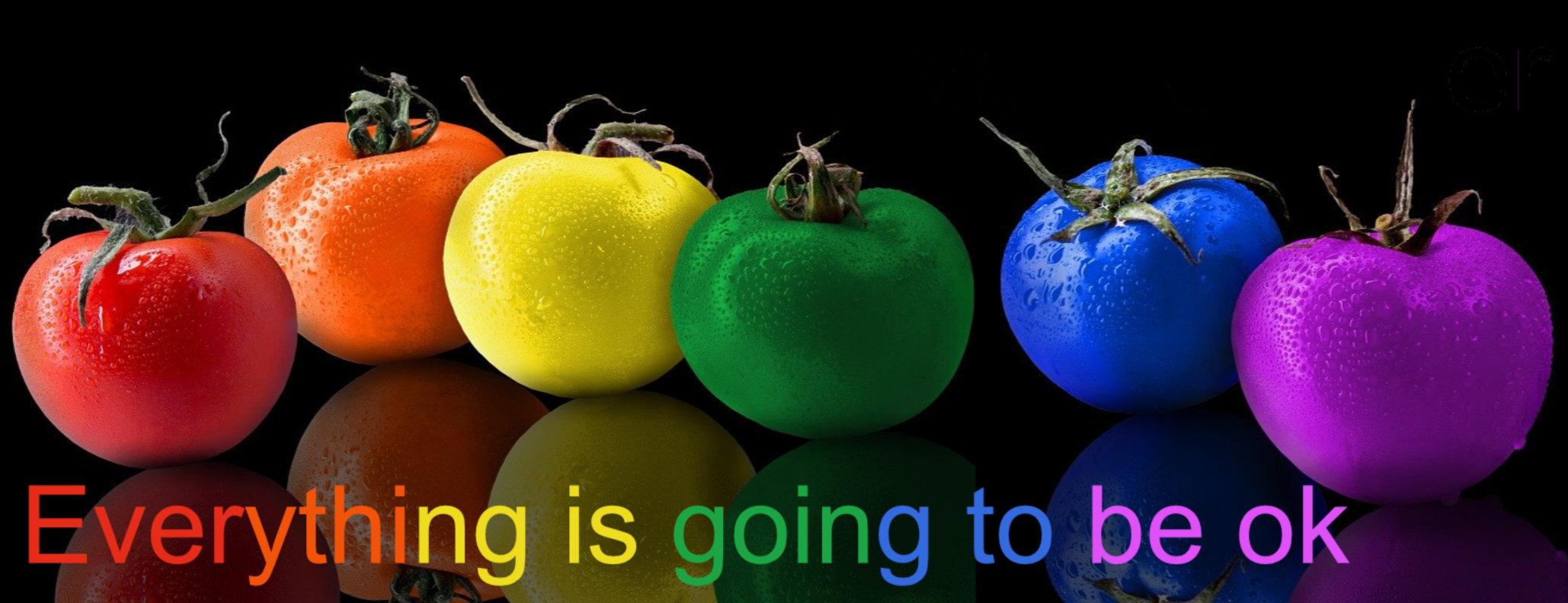





Displays of hate
by Maïtée Labrecque-SaganashThe Quebec provincial election was straight out of a dystopian movie.
Besides the anxiety of having my giant face on signs on every power pole in town and the outcome of the elections, many things went wrong.
Premier François Legault and his col leagues spent their whole campaign mak ing fun of everyone and everything – lit erally. Their targets included immigrants, Indigenous peoples, climate change and youth who are concerned about climate change, anglophones, the poor, as well as the citizens of Rouyn-Noranda poisoned by the Horne copper smelter.

I wish I could explain the CAQ’s political strategy in great depth, but I can’t. Whether in televised debates, on the radio or in press conferences, the CAQ kept on making statements to mislead and antagonize the population. Bogus claims, like “80% of immigrants don’t speak French and don’t work” or “Joyce Echaquan’s case was dealt with in Joliette and is closed”, were quickly debunked by experts and media, but their misinformation was appealing enough to a large portion of voters. I guess the bad education system in Quebec is catching up to us.
There were also irregularities at the polls. Unlike federal elections, you cannot add yourself to the provincial voting list on-site if you aren’t on it. It’s mind-bog gling that provincial poll workers can prevent citizens from voting even if they bring proof of residency and an ID.
Active suffrage is a right every Canadian has under the Charter of Rights
and Freedoms, but the Electoral Act in Quebec states that your name must be on the list to vote.
Plus, people who were previously on the provincial list were suddenly not, poll ing stations changed locations up to two times without notice in some communi ties, and the advanced poll dates changed in Ungava even if they had started.
Quite a sketchy roll-out for such a democratic process. It fits Quebec’s nar rative to say Indigenous communities don’t vote anyways, but even when we want to there are unnecessary hurdles. Voting shouldn’t be complicated.
Legault once promised he would reform Quebec’s voting system. If we look at the election results, CAQ got a majority government with 41% of the votes. That
means 59% of voters did not support Legault and his party.
A new voting system of the mixed-member proportional representa tion type would allow a much different scenario from the one we got on October 3, but for obvious reasons Legault now dismissed the possibility of any reform.
I dread the fact that we will have to deal with Legault’s government for four more years, especially after making provocative statements on building new dams up North, without having talked about it with our leadership. I also dread all the hate against marginalized commu nities that transpires from their policies. I hold on to the fact that Crees are resilient and when times are rough, we resist.
Wehavebeenpresent since1939.Allmembers ofthelargeDeshaies' familyarebyyourside
Wehavebeenpresent since1939.Allmembers ofthelargeDeshaies' familyarebyyourside
forthebetterdaysto
forthebetterdaysto
